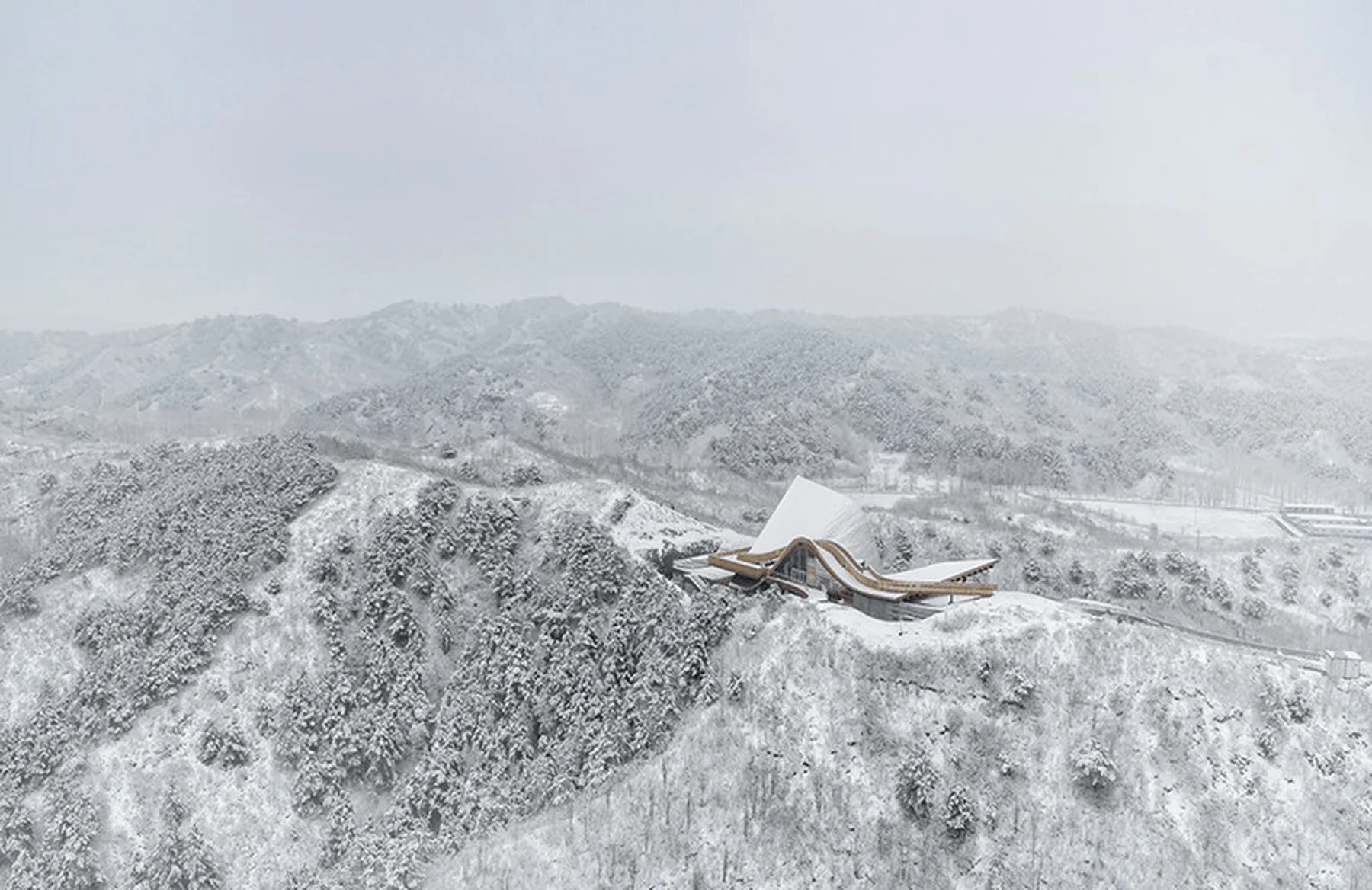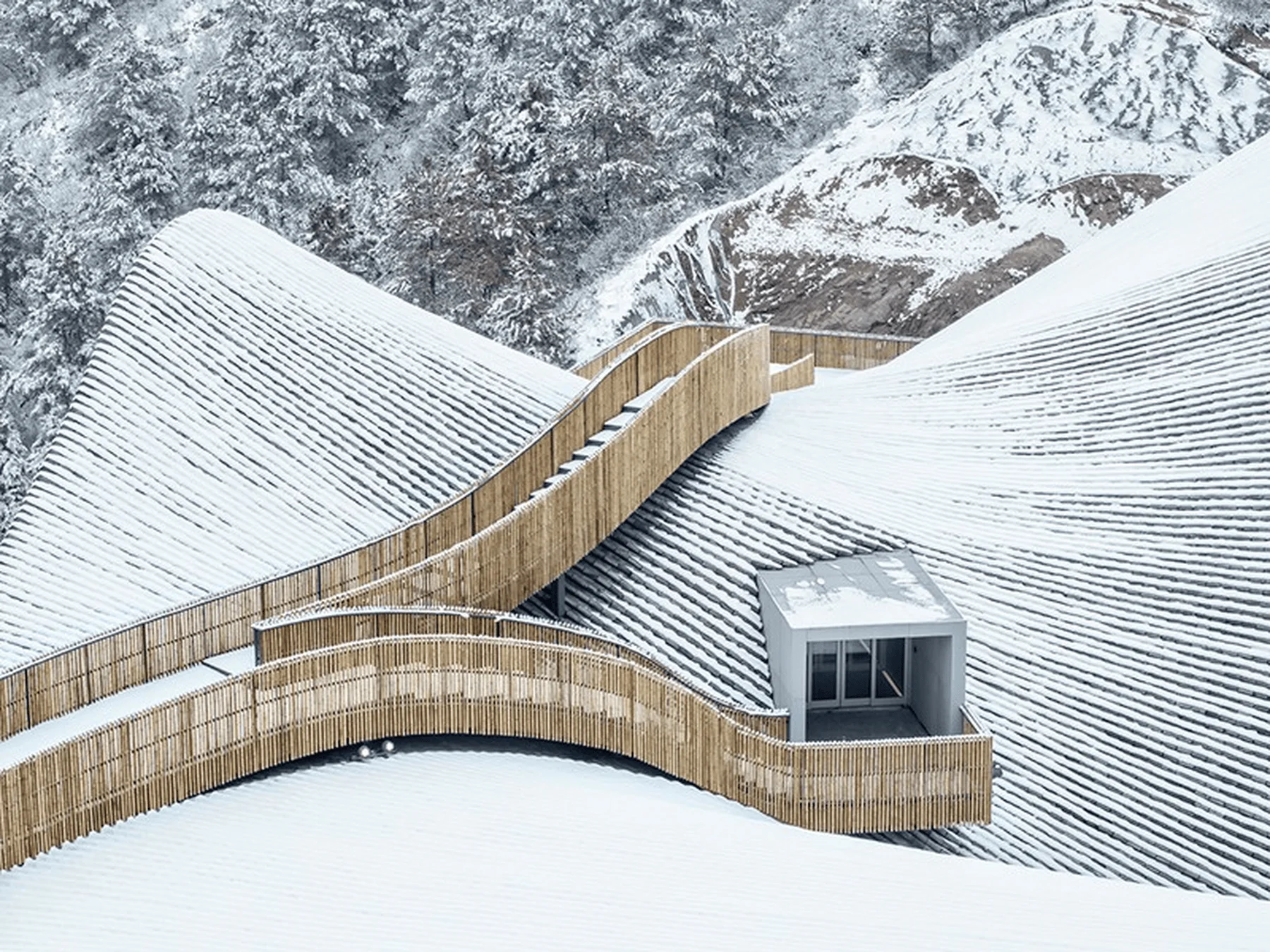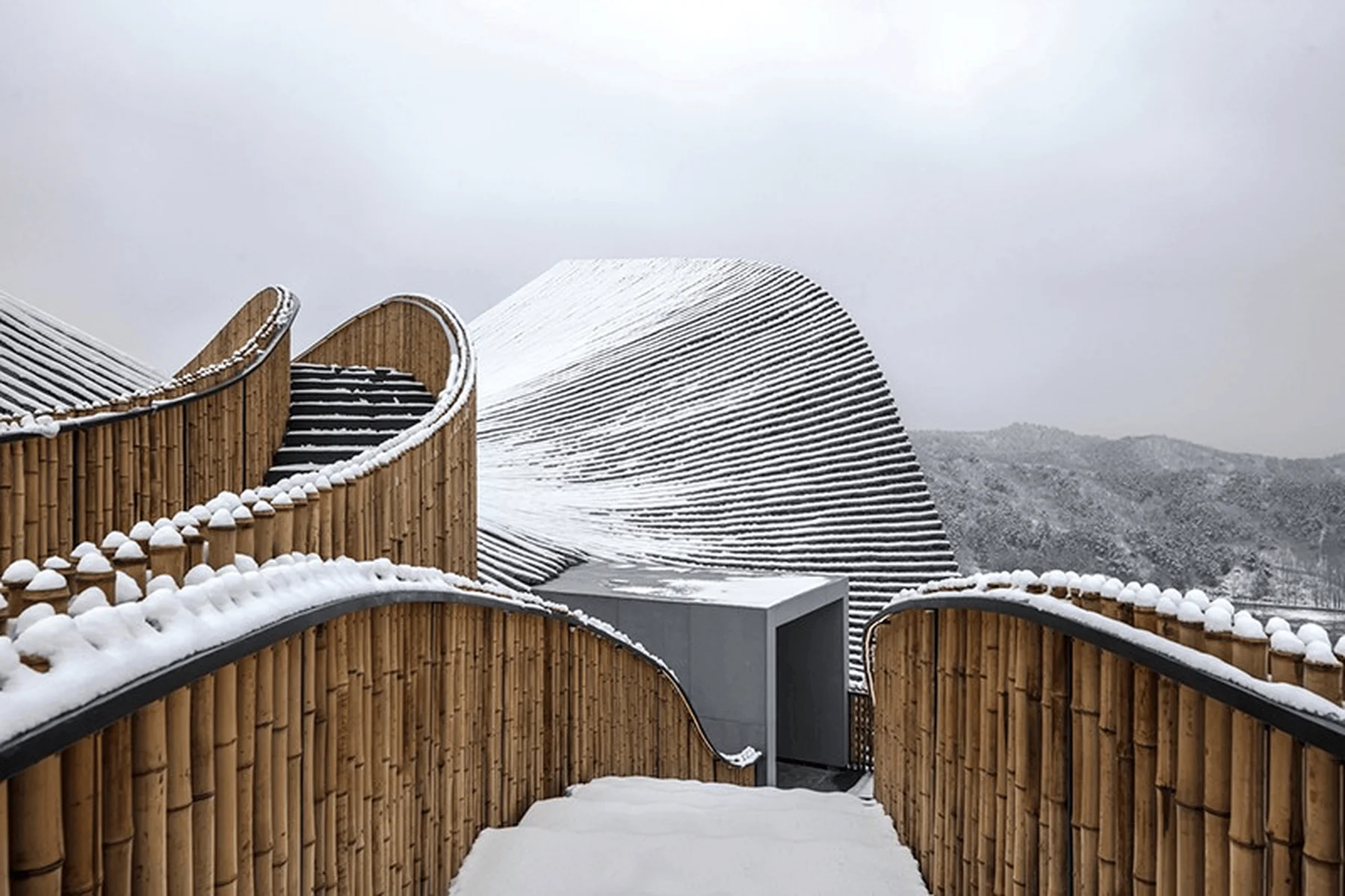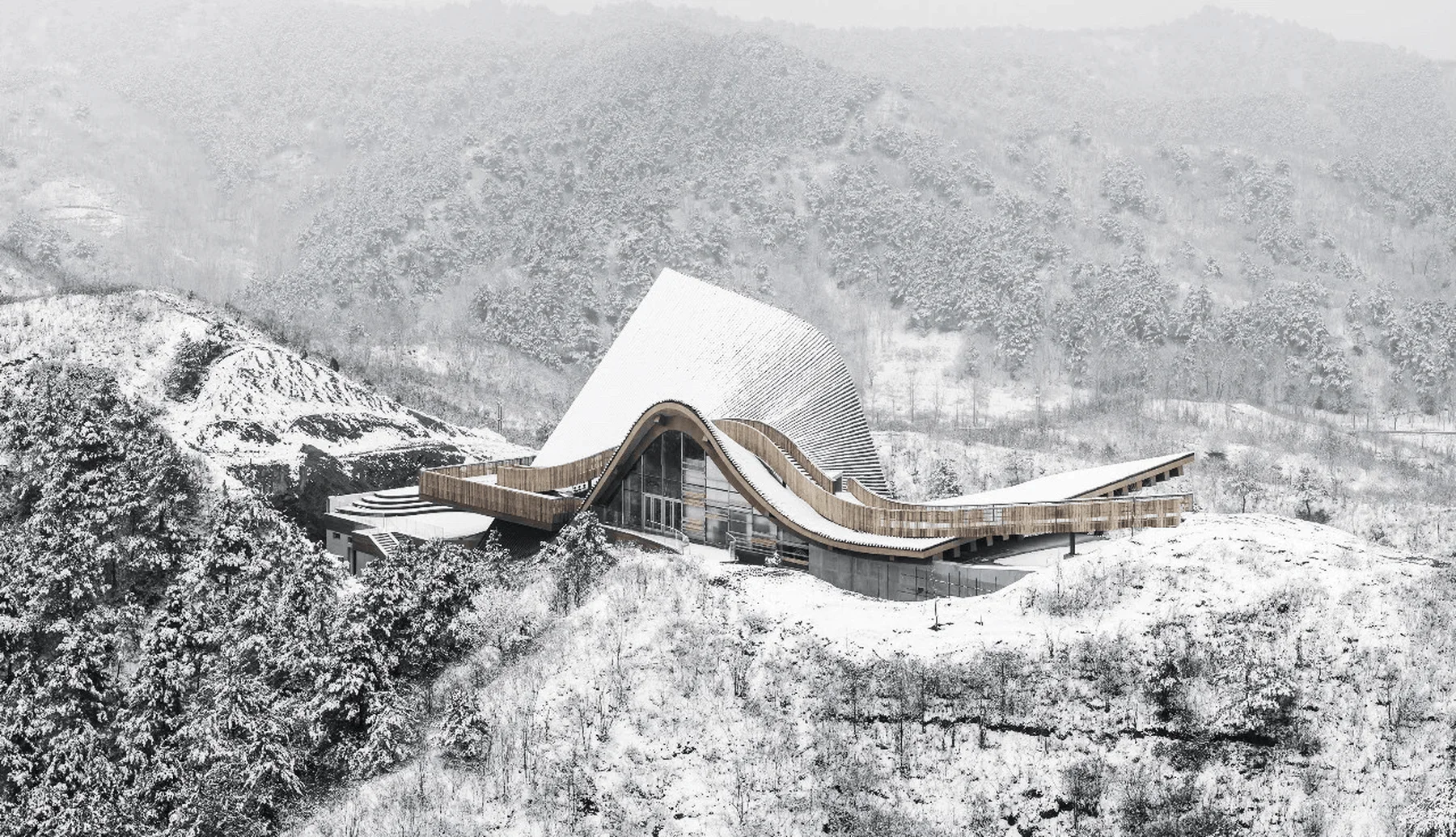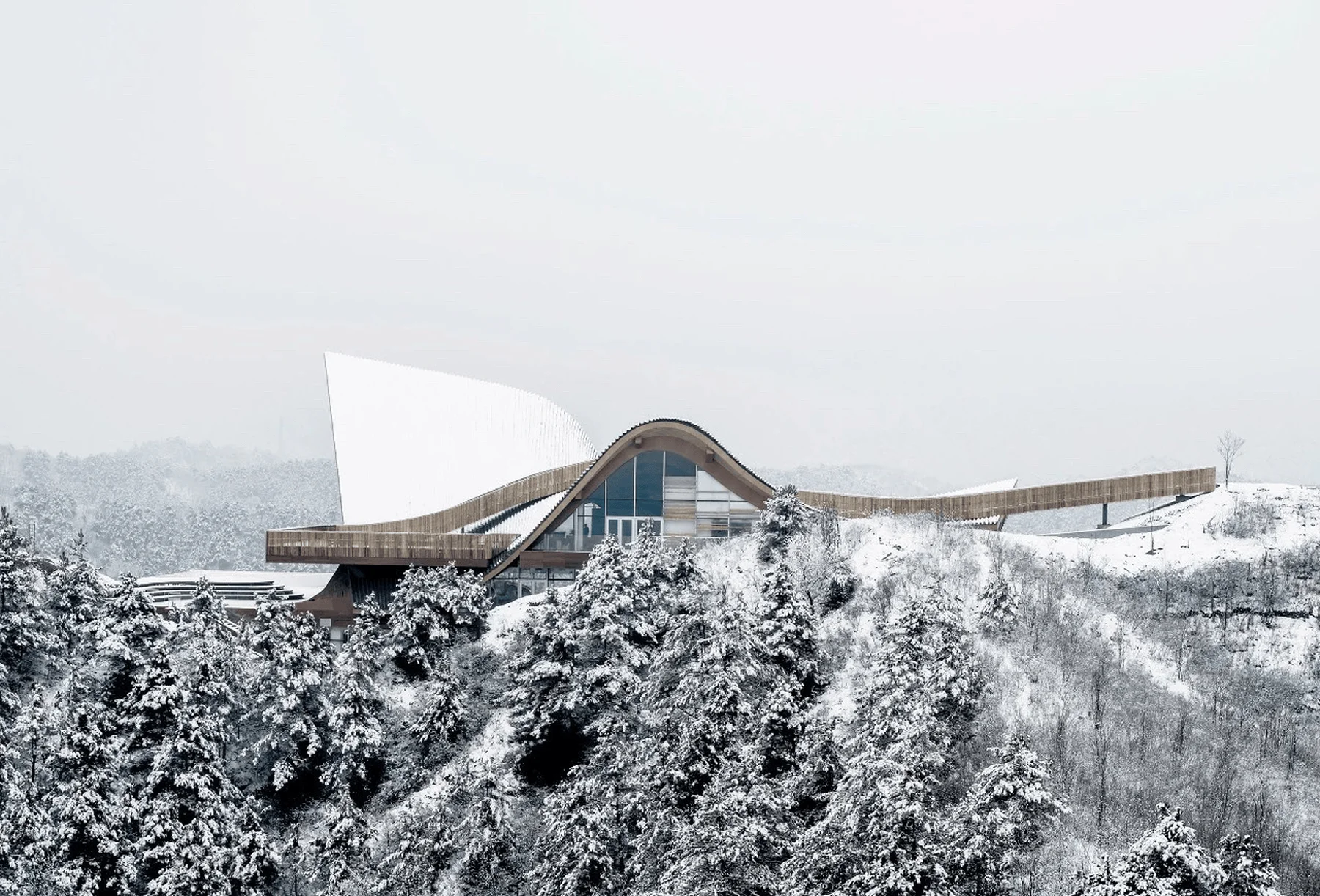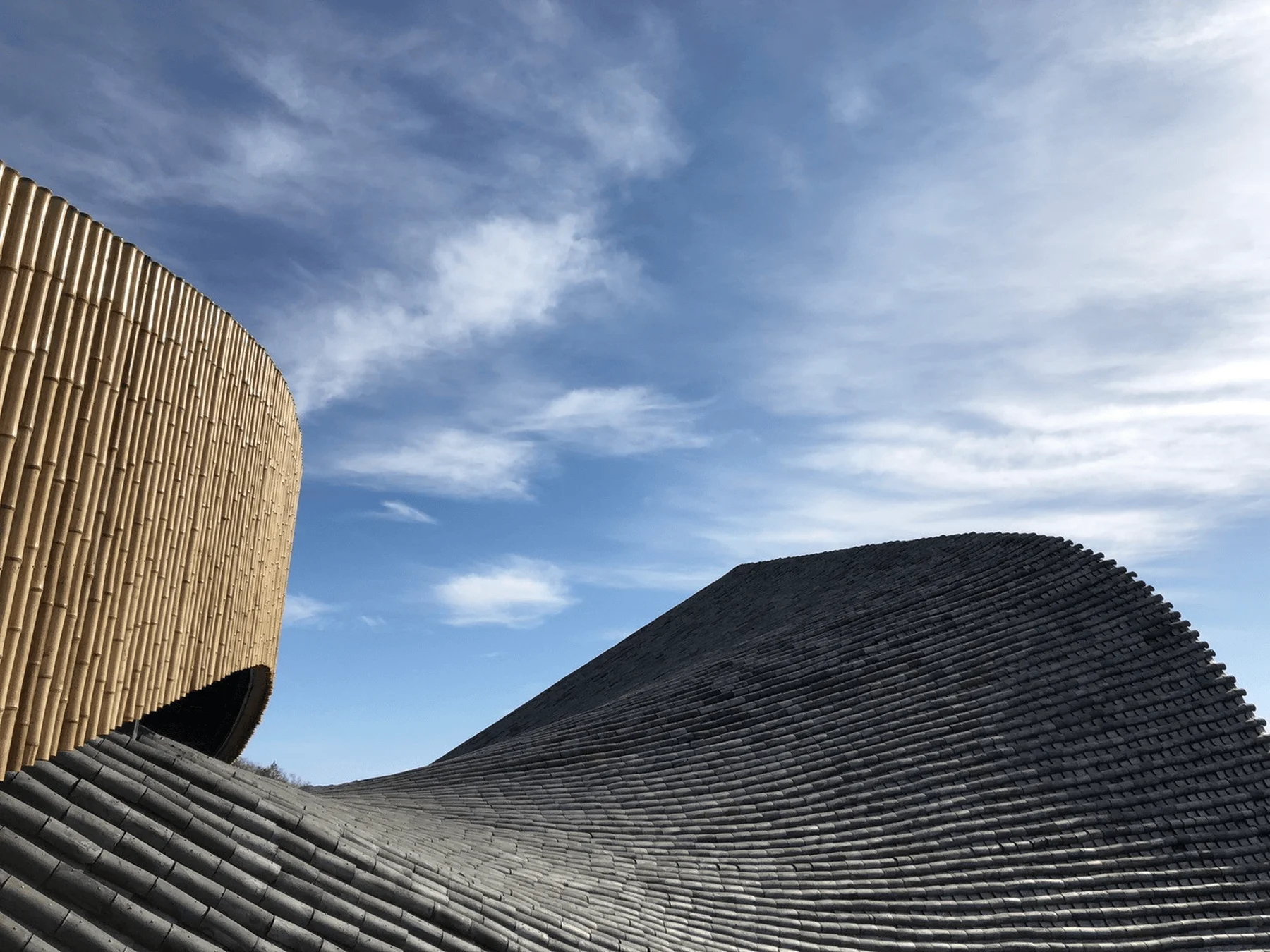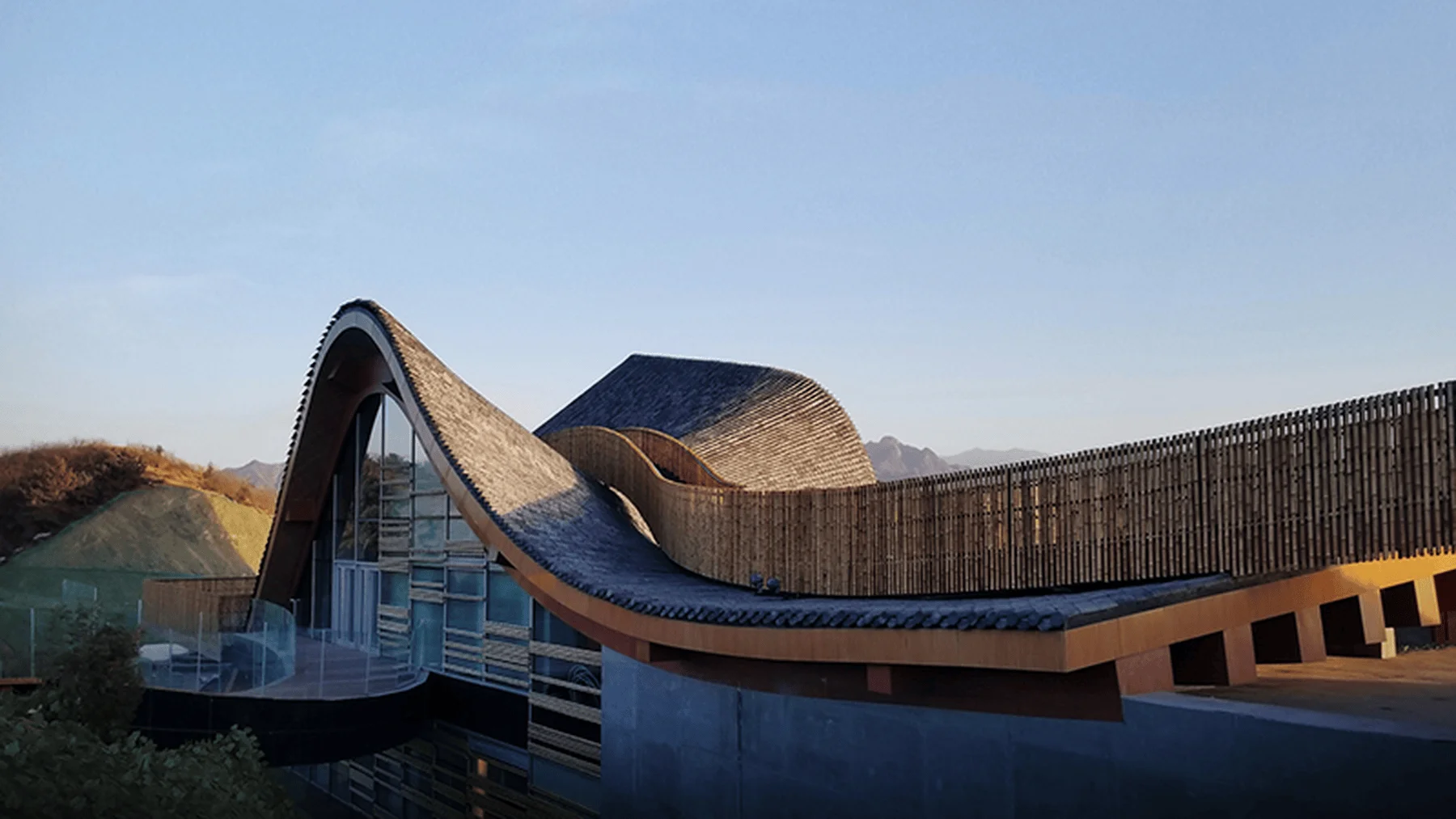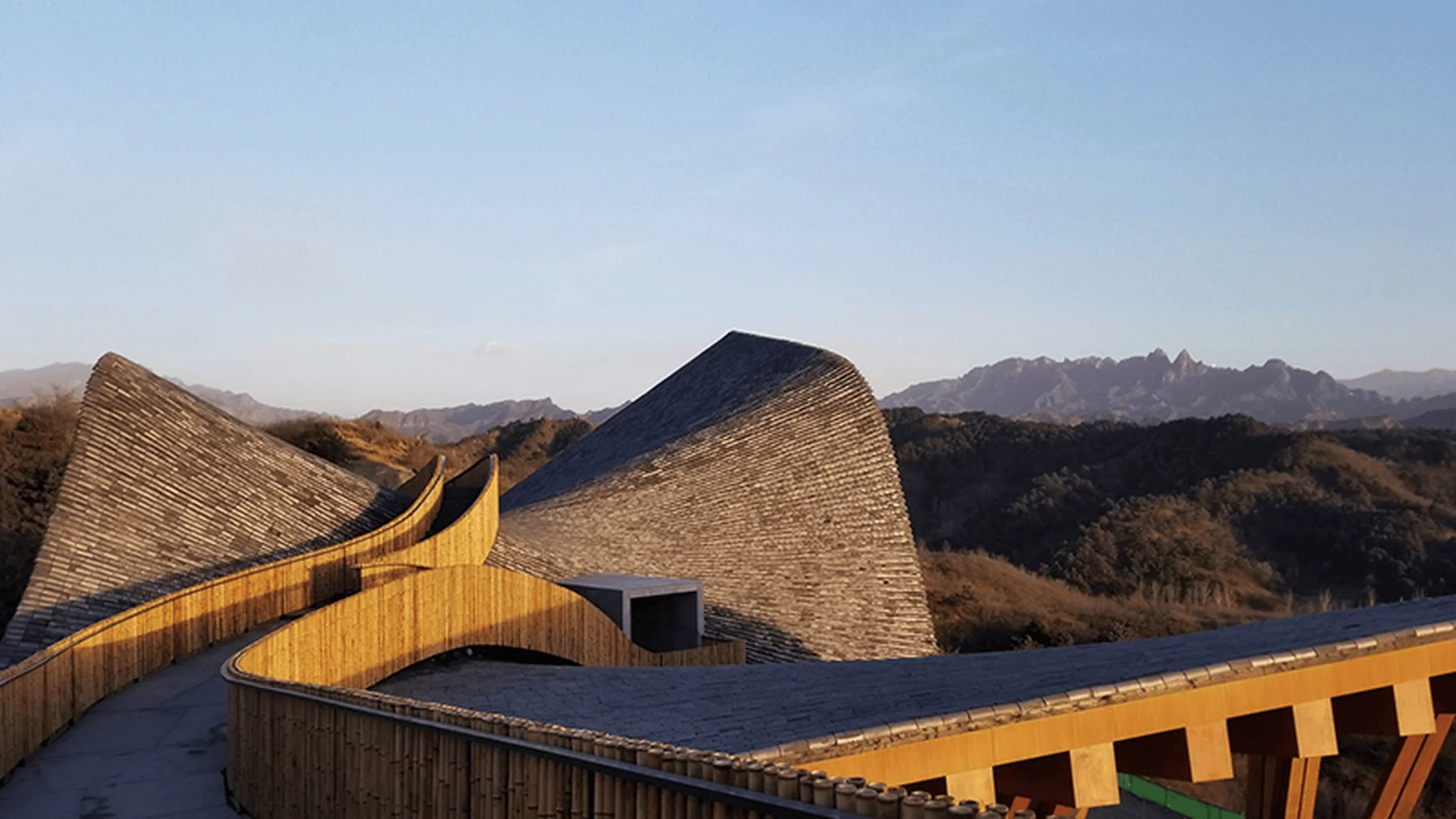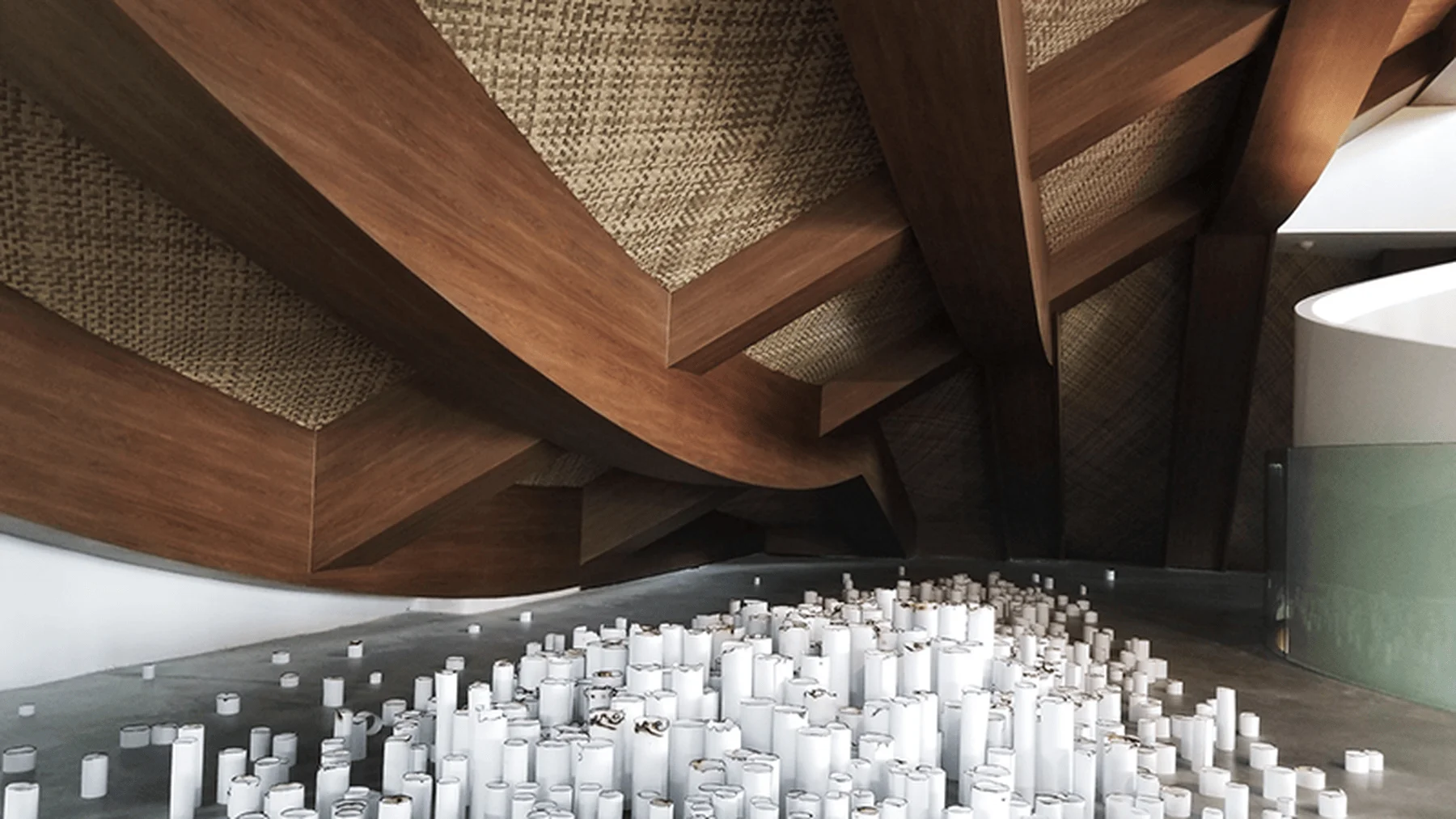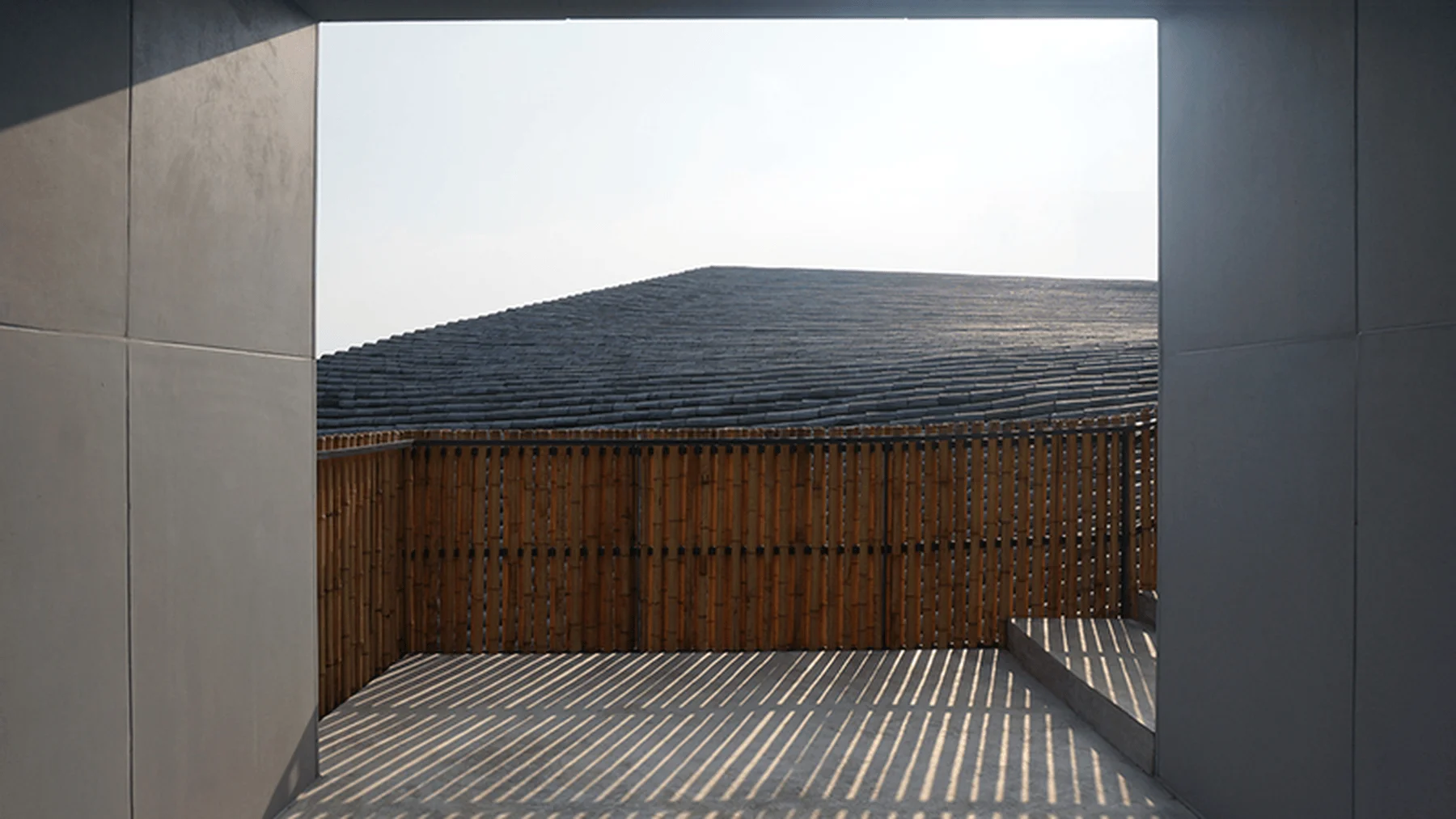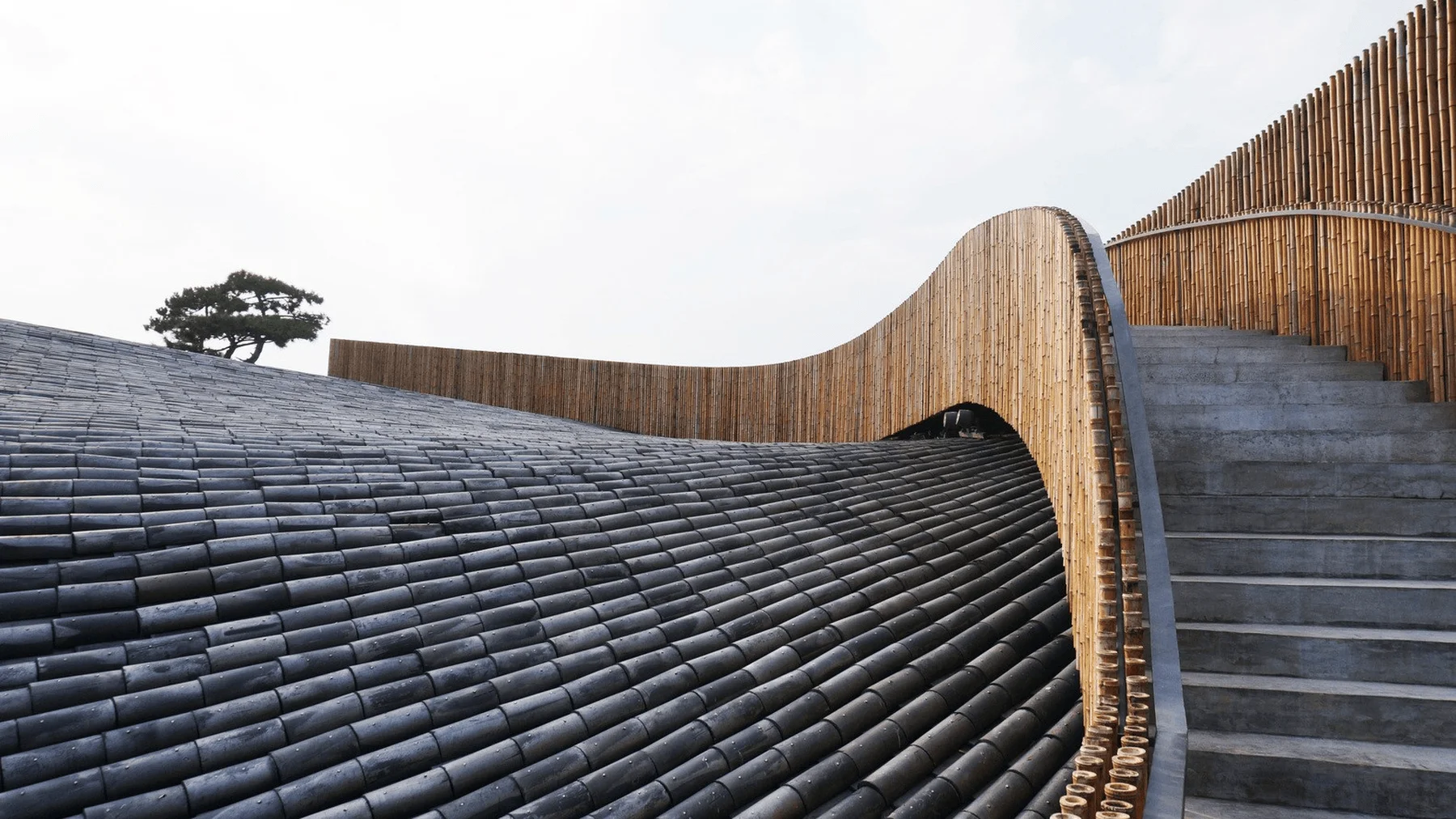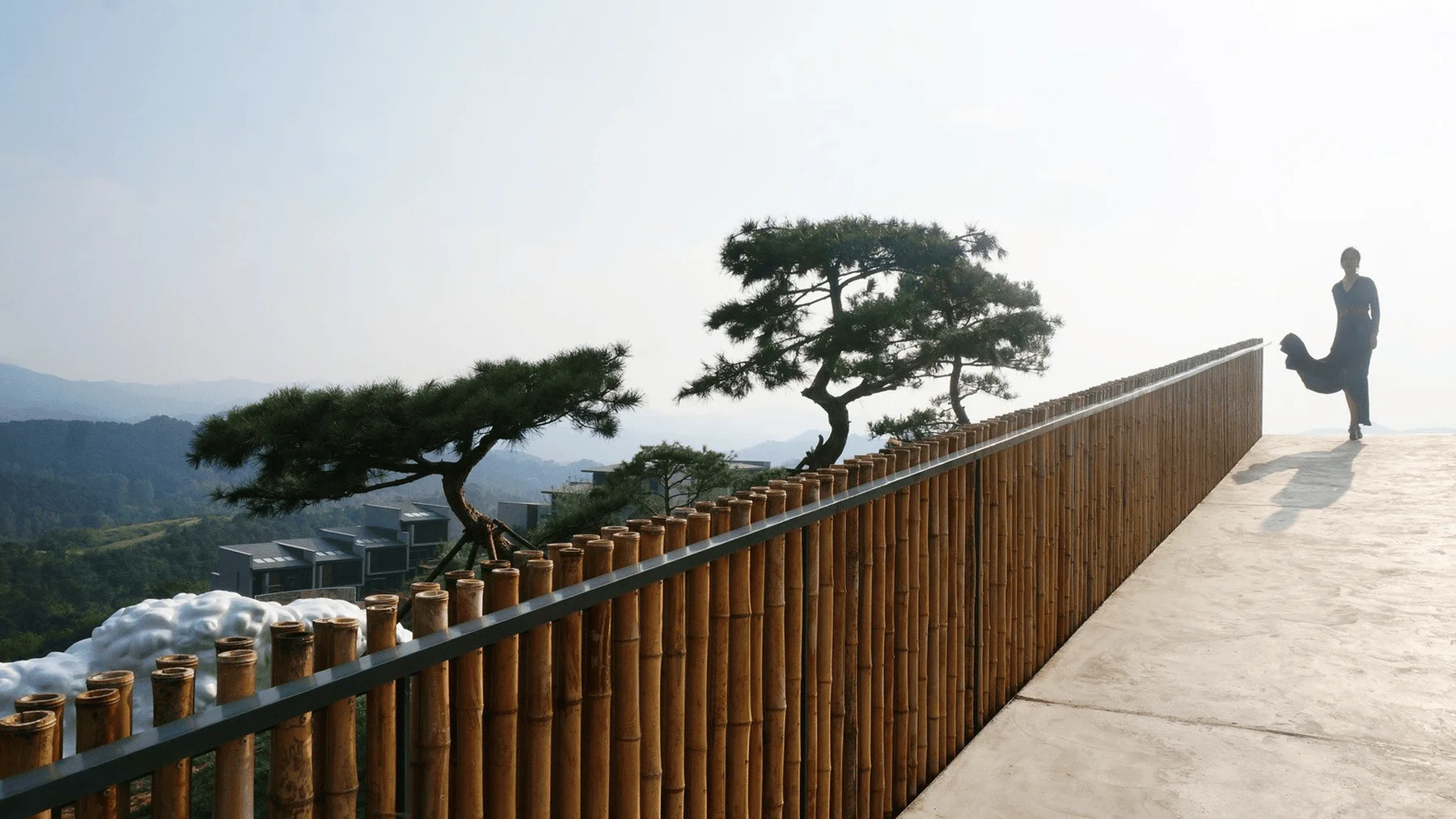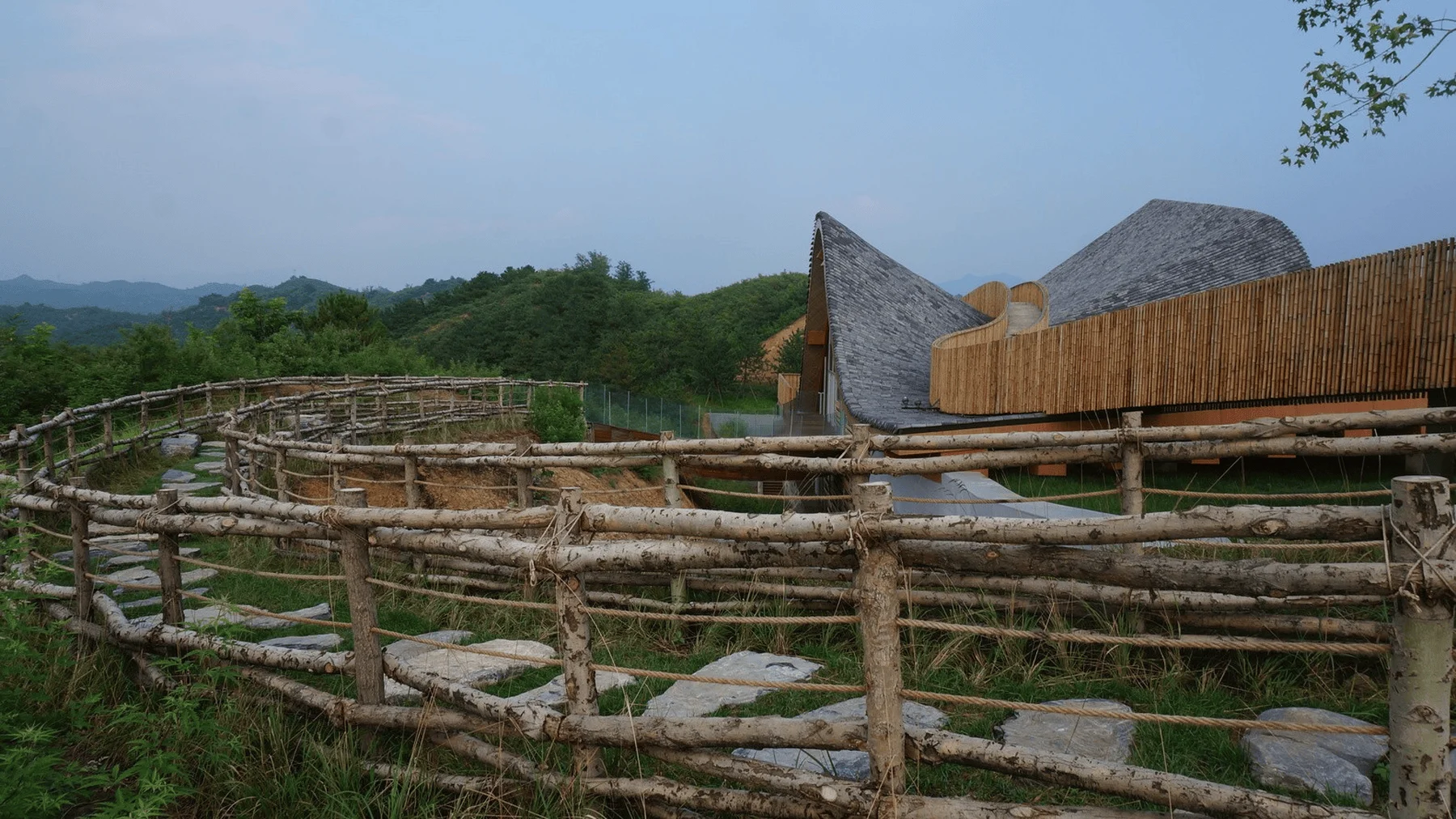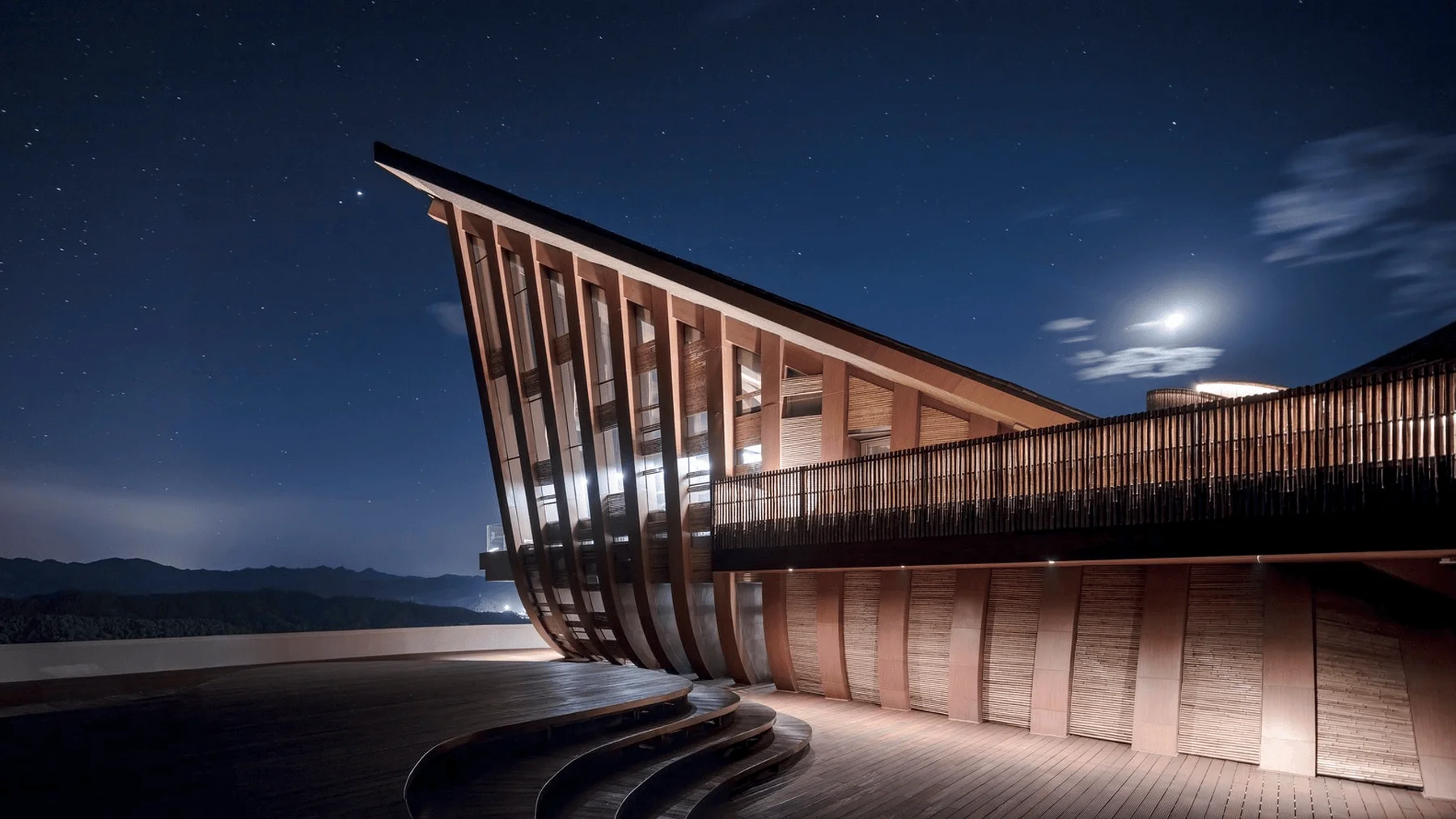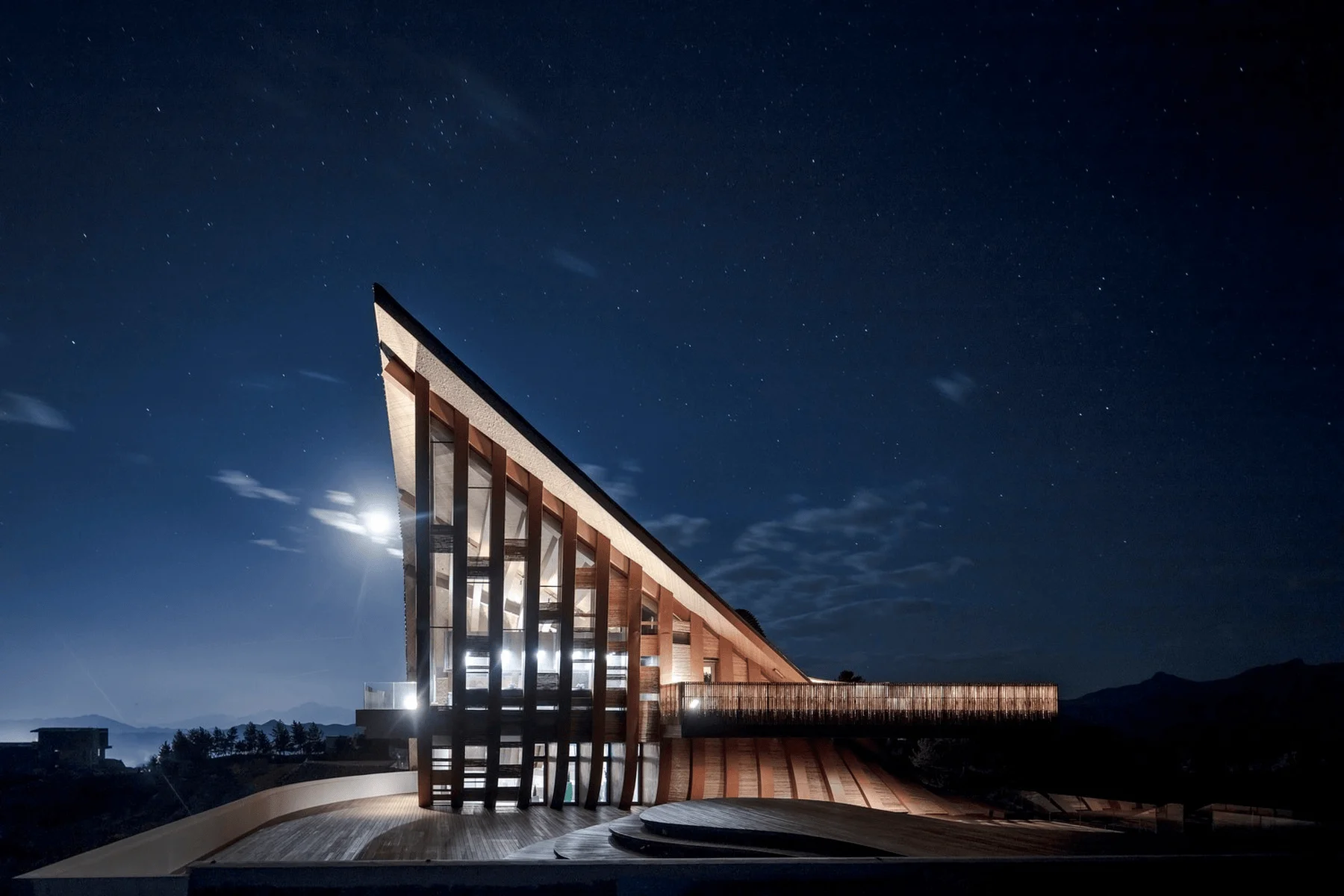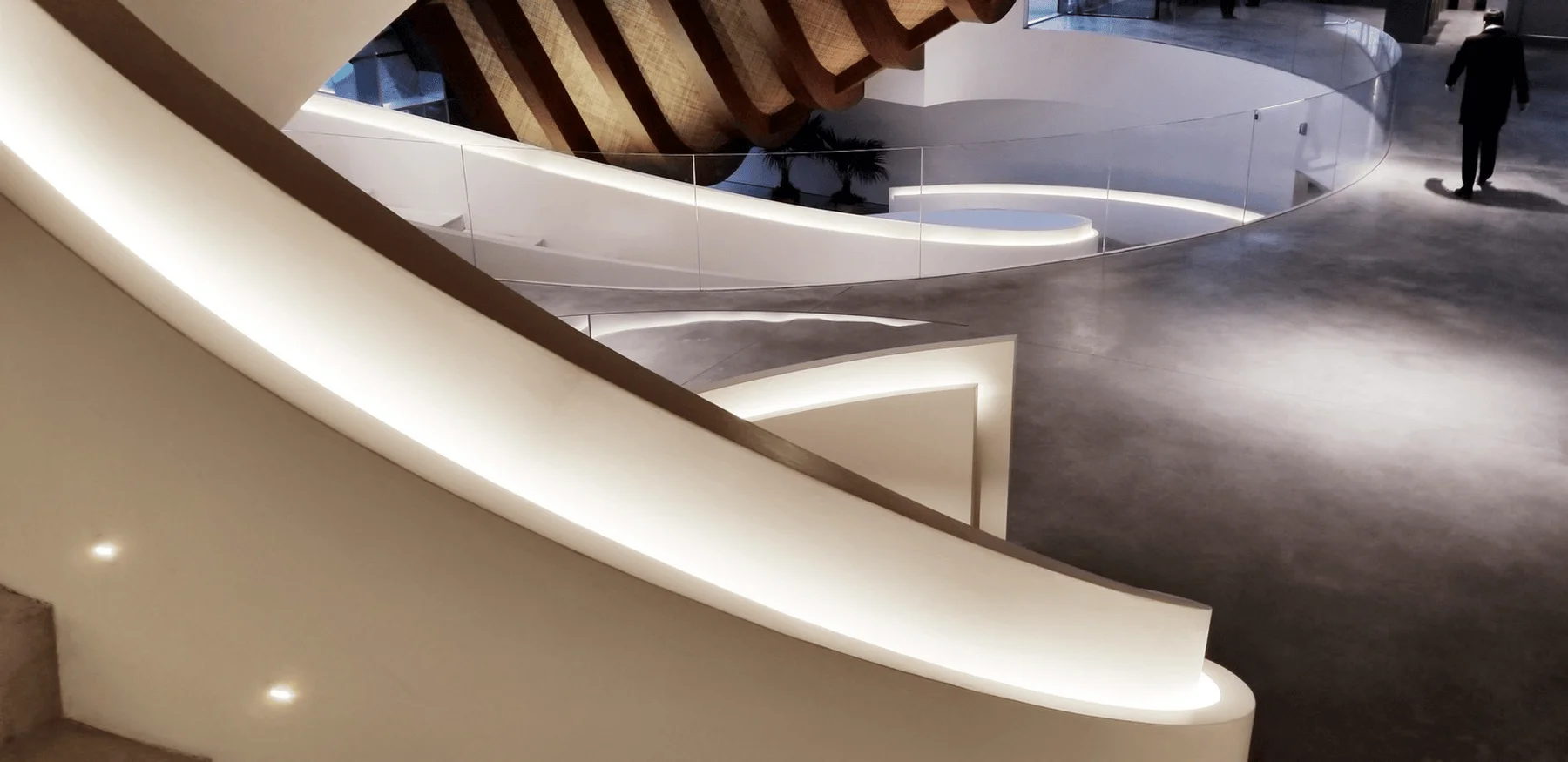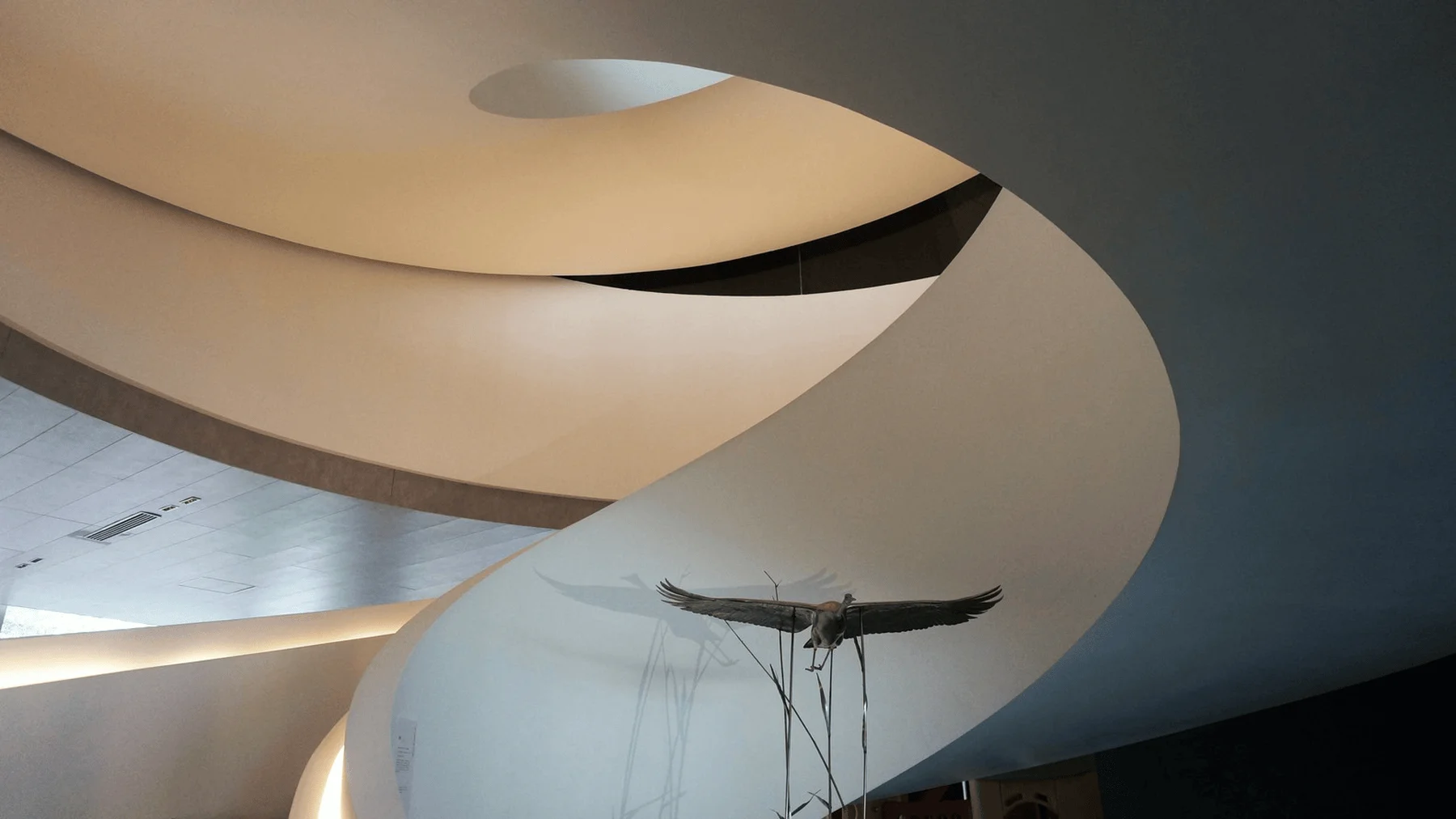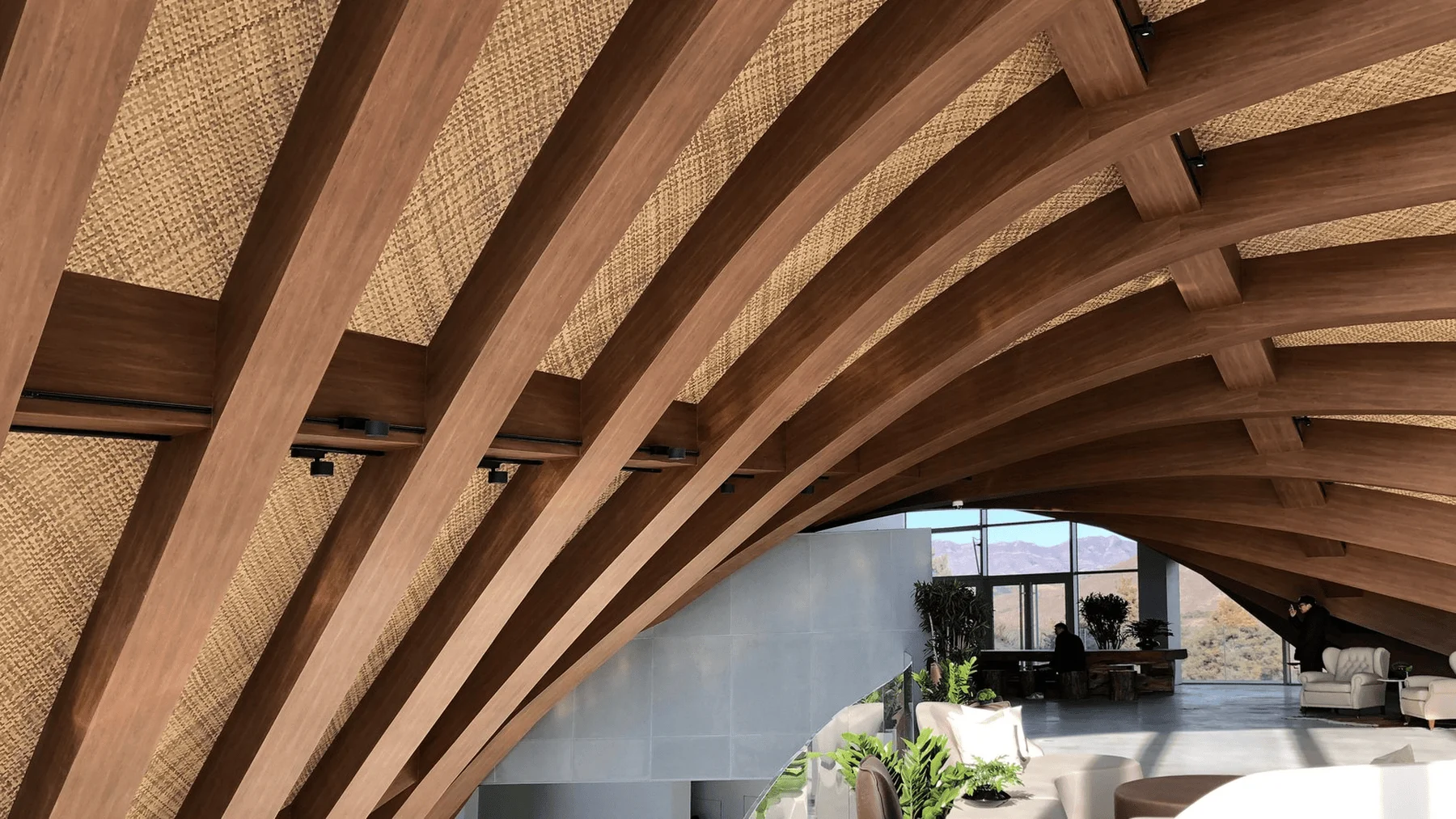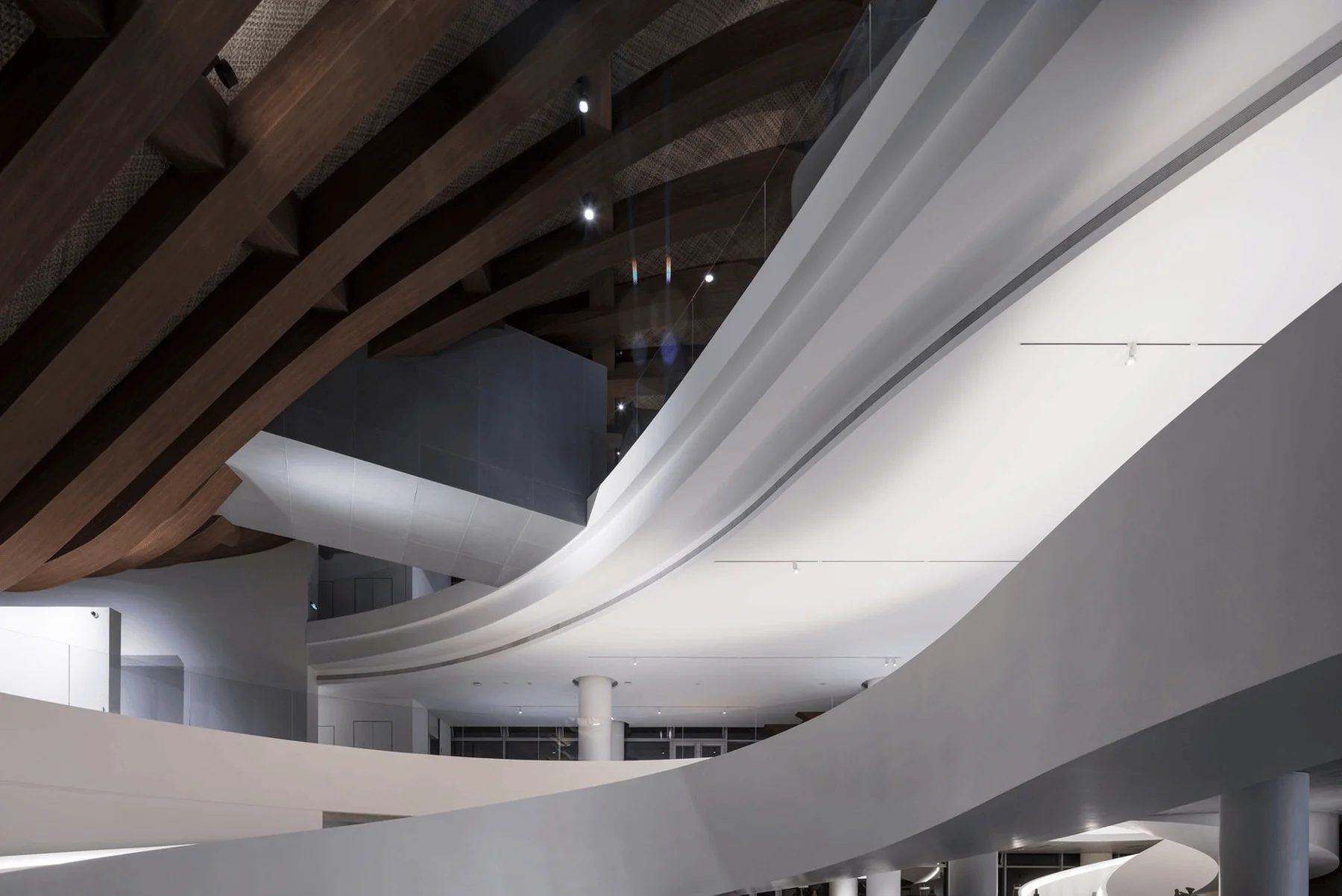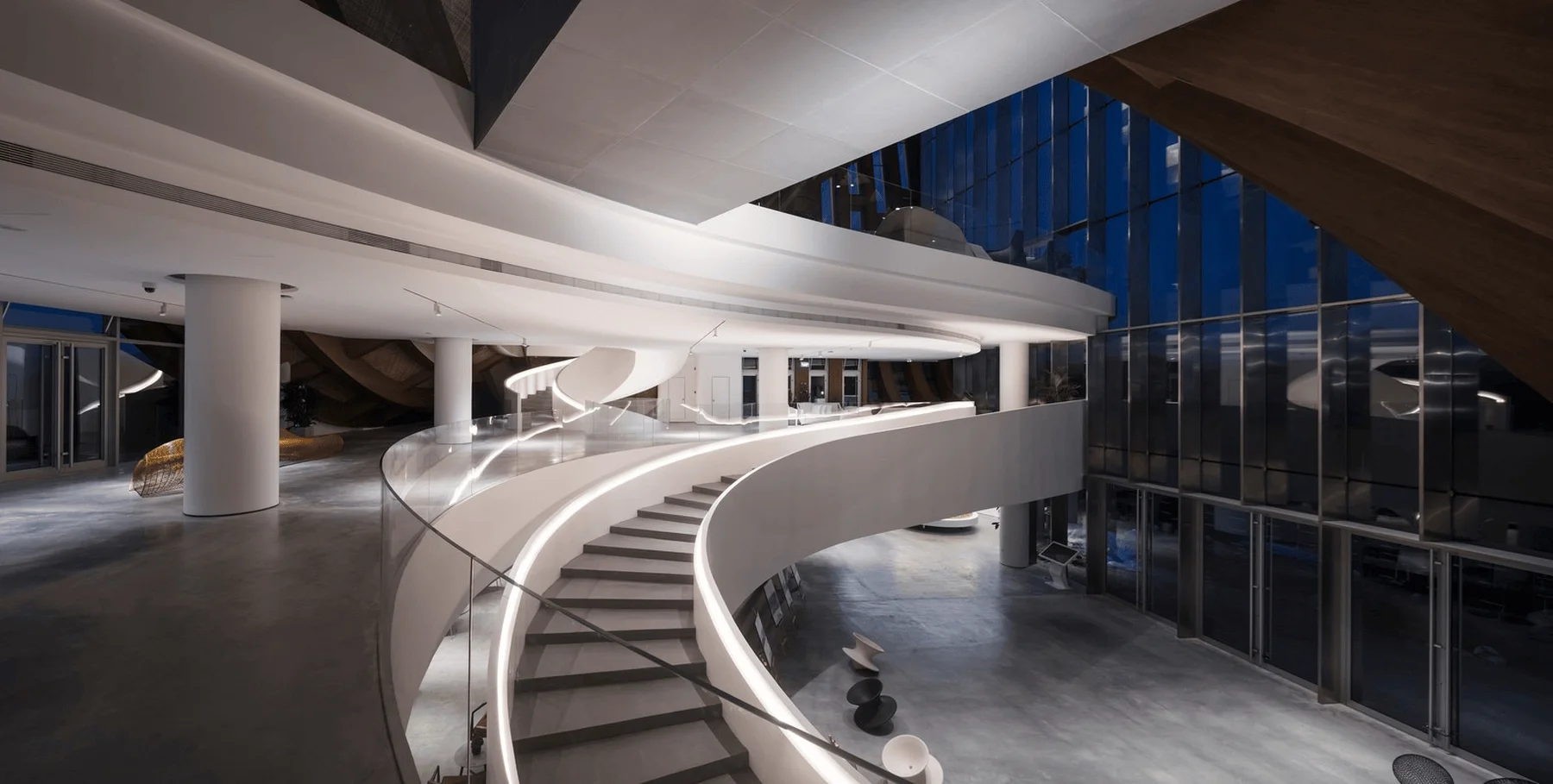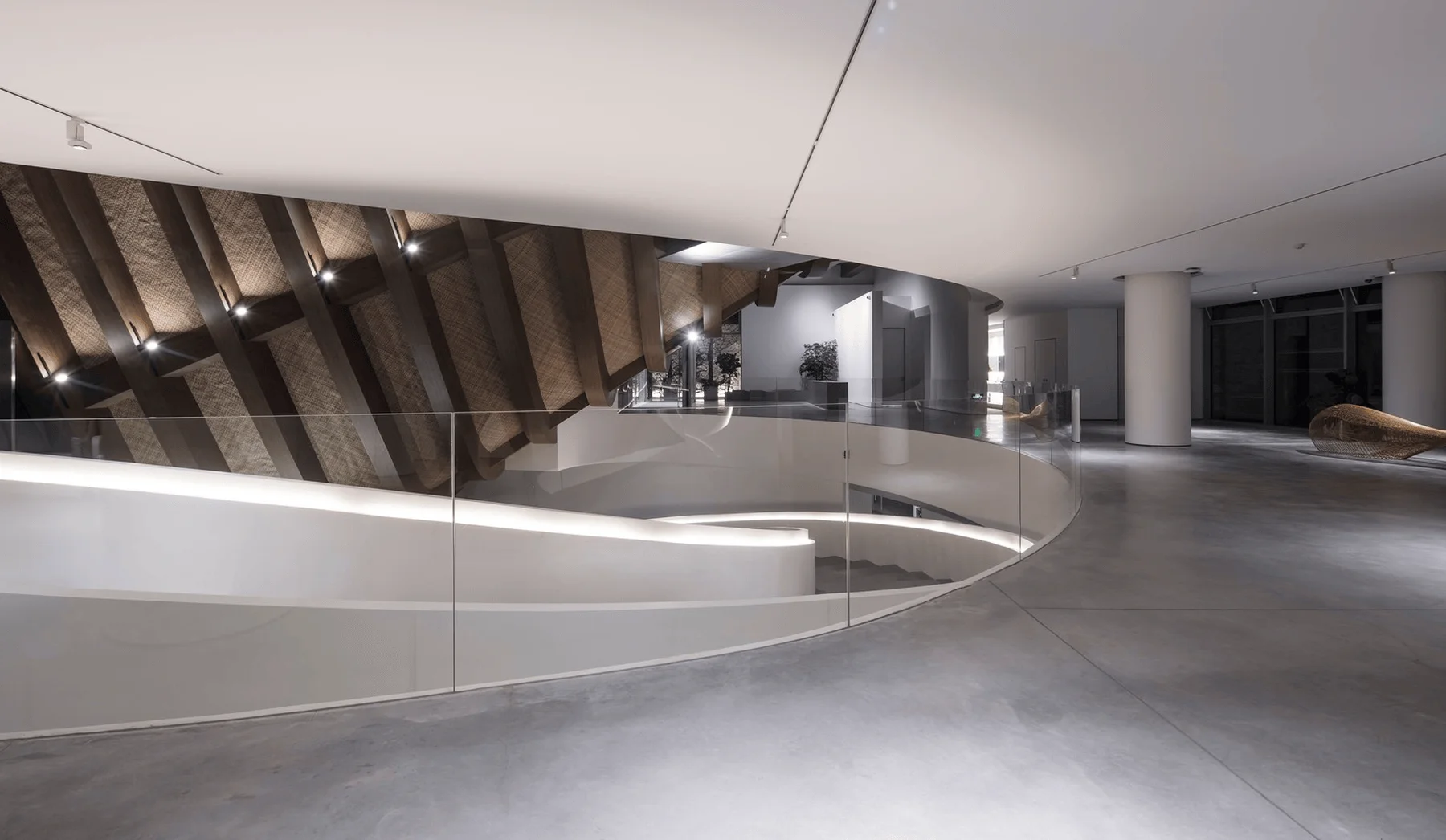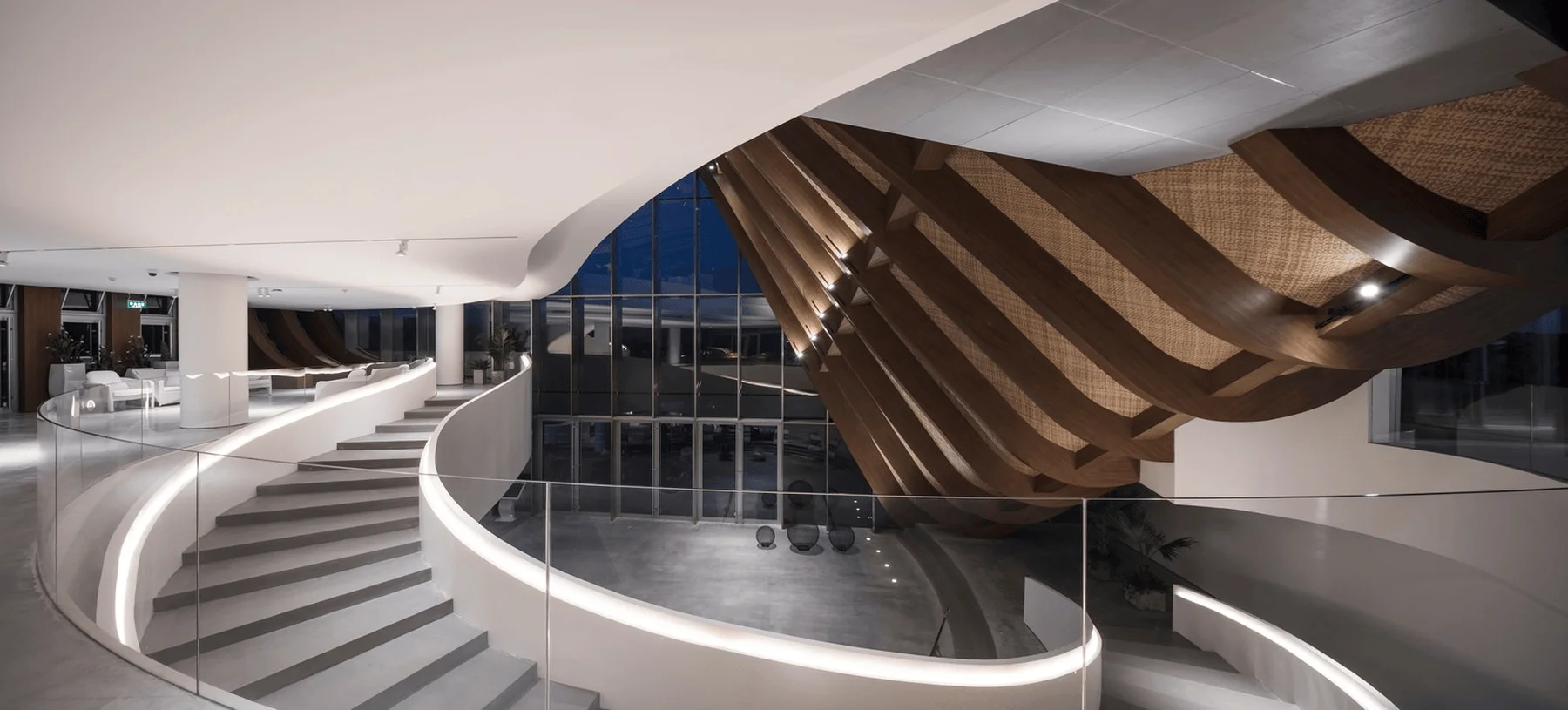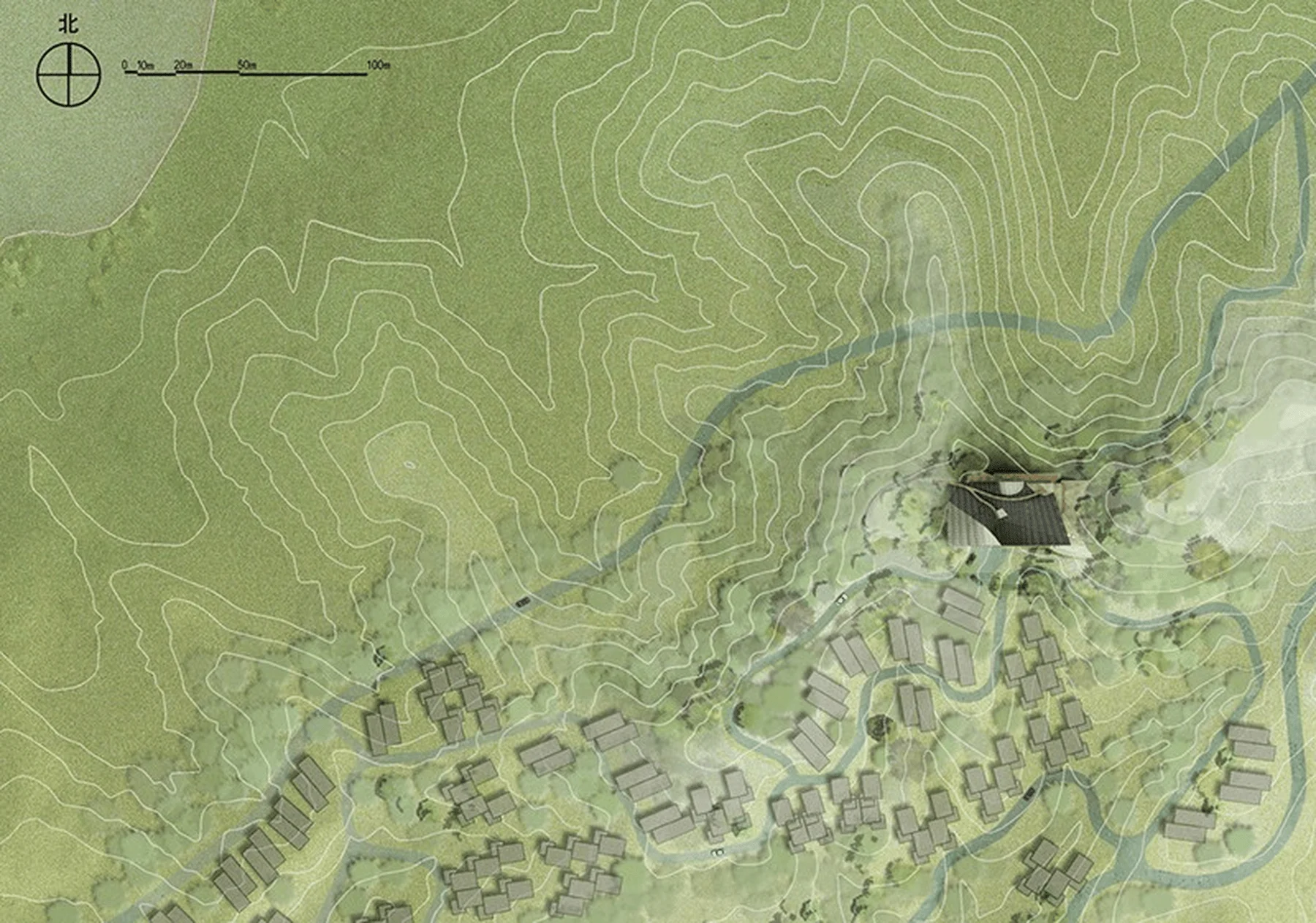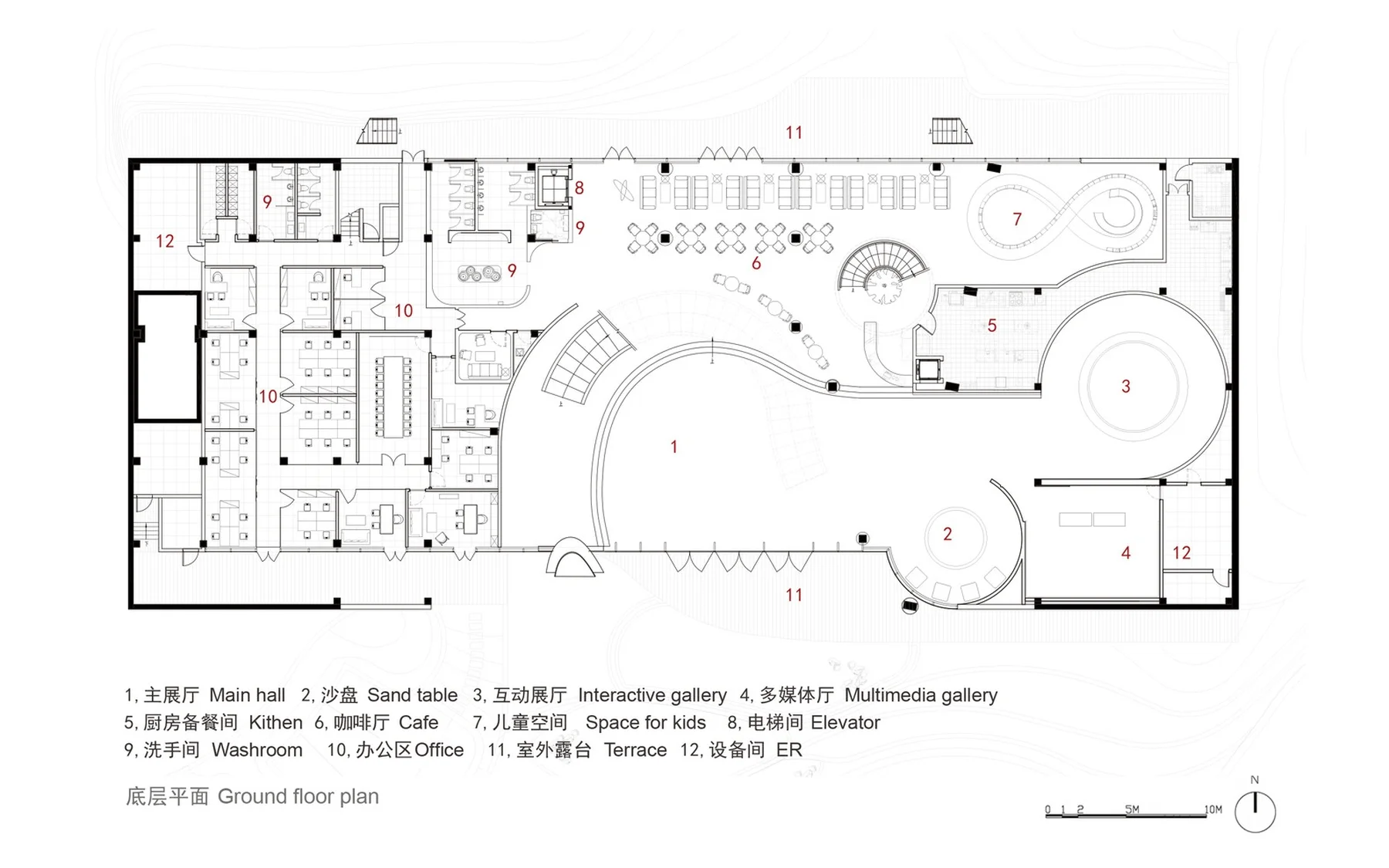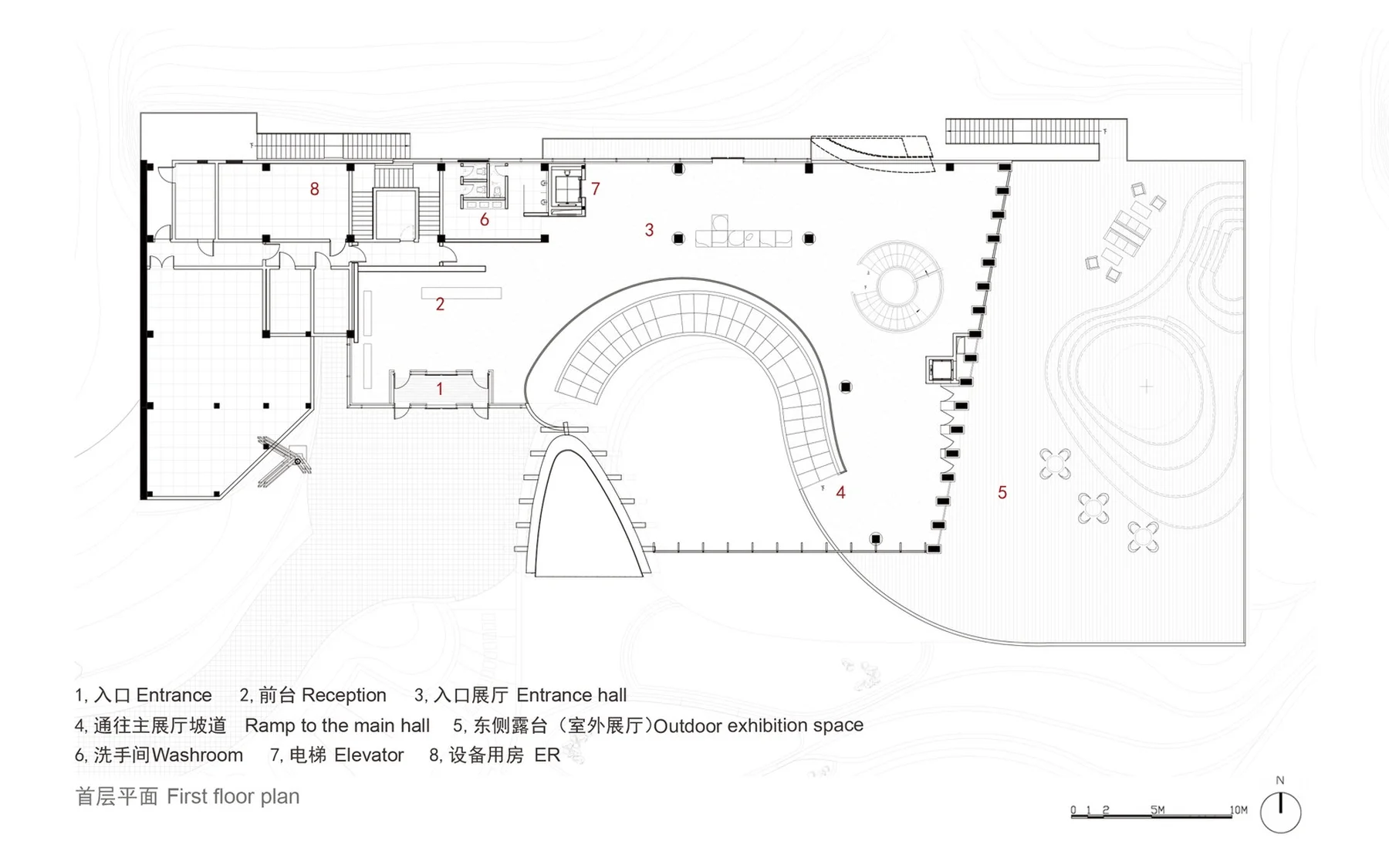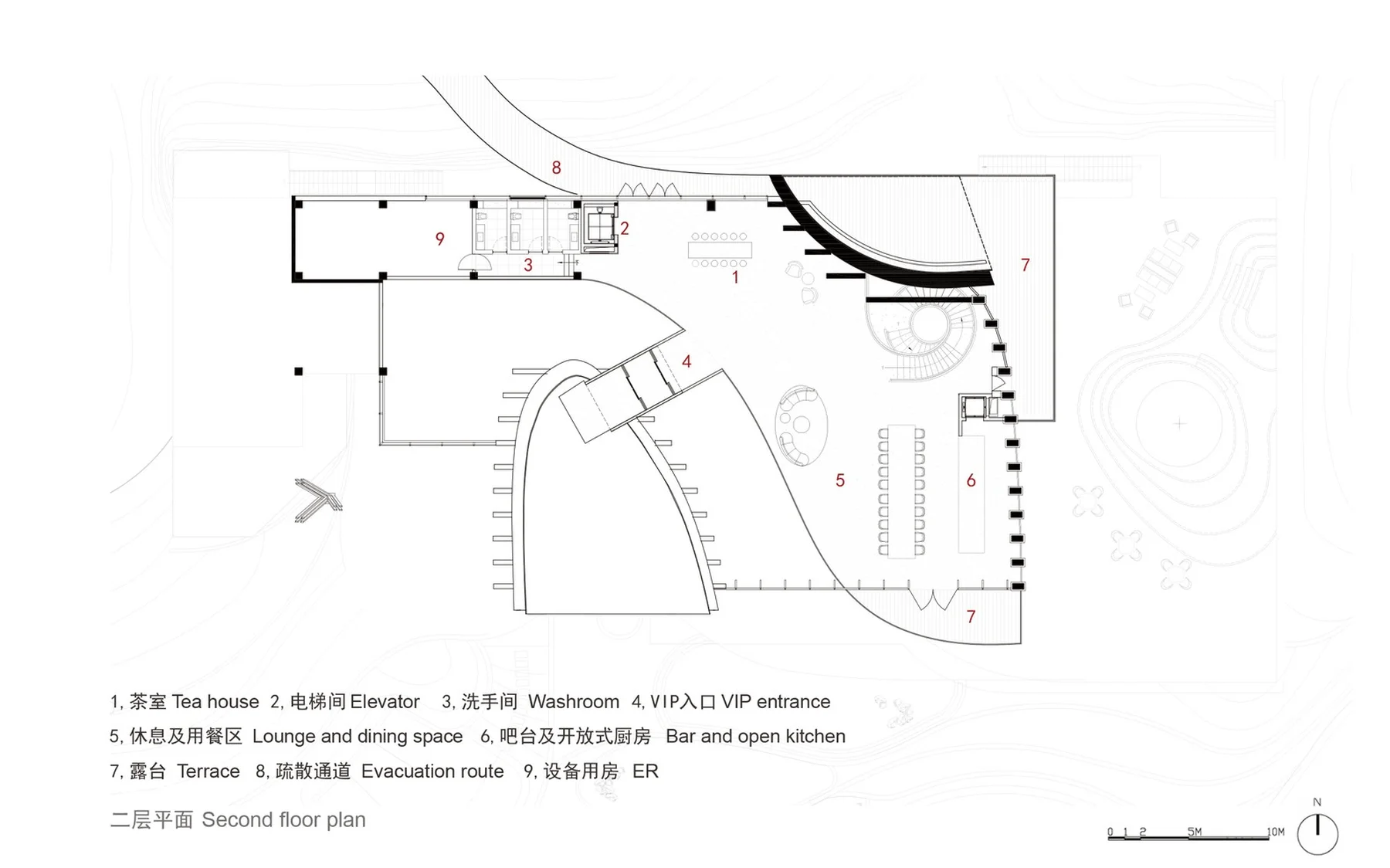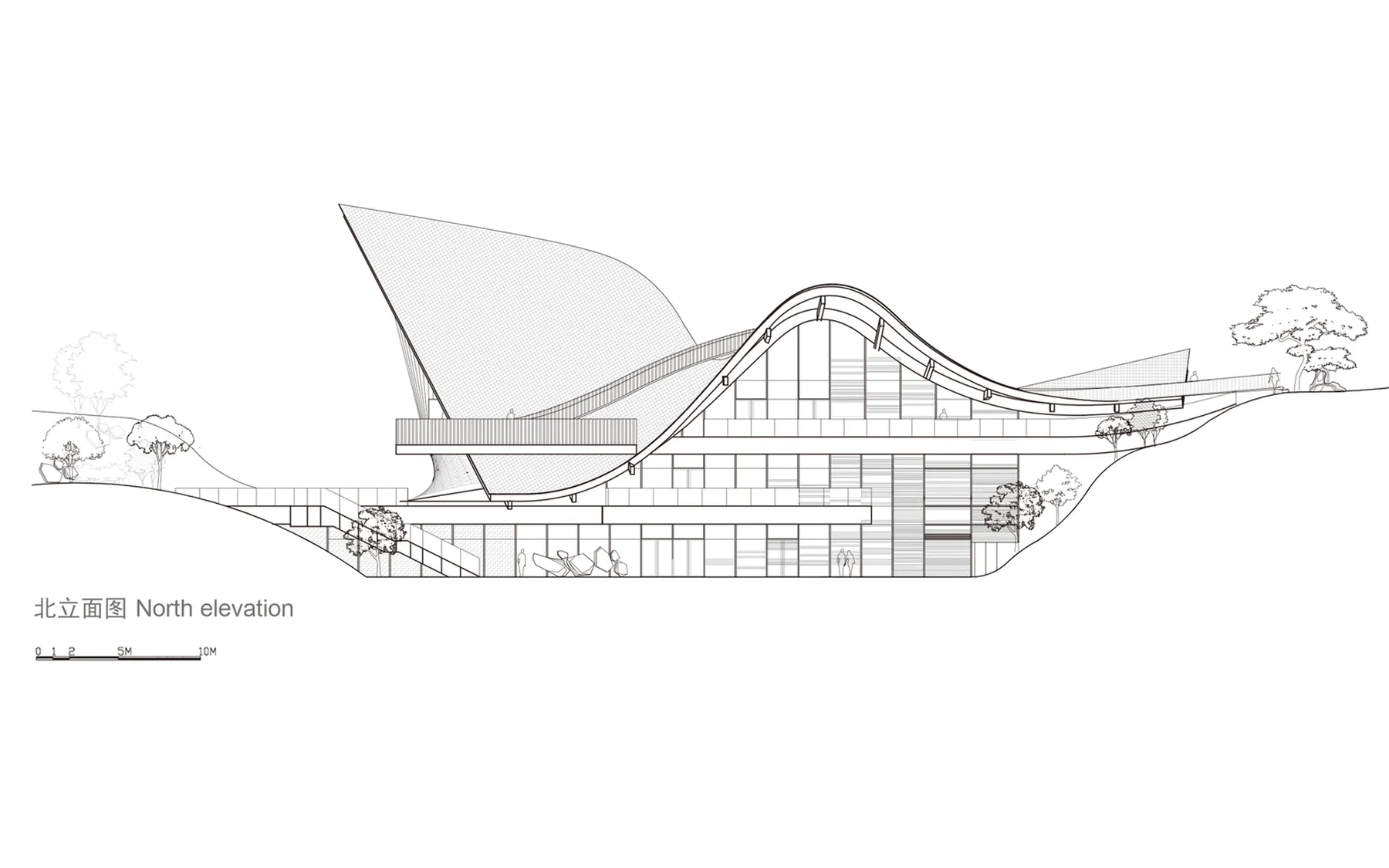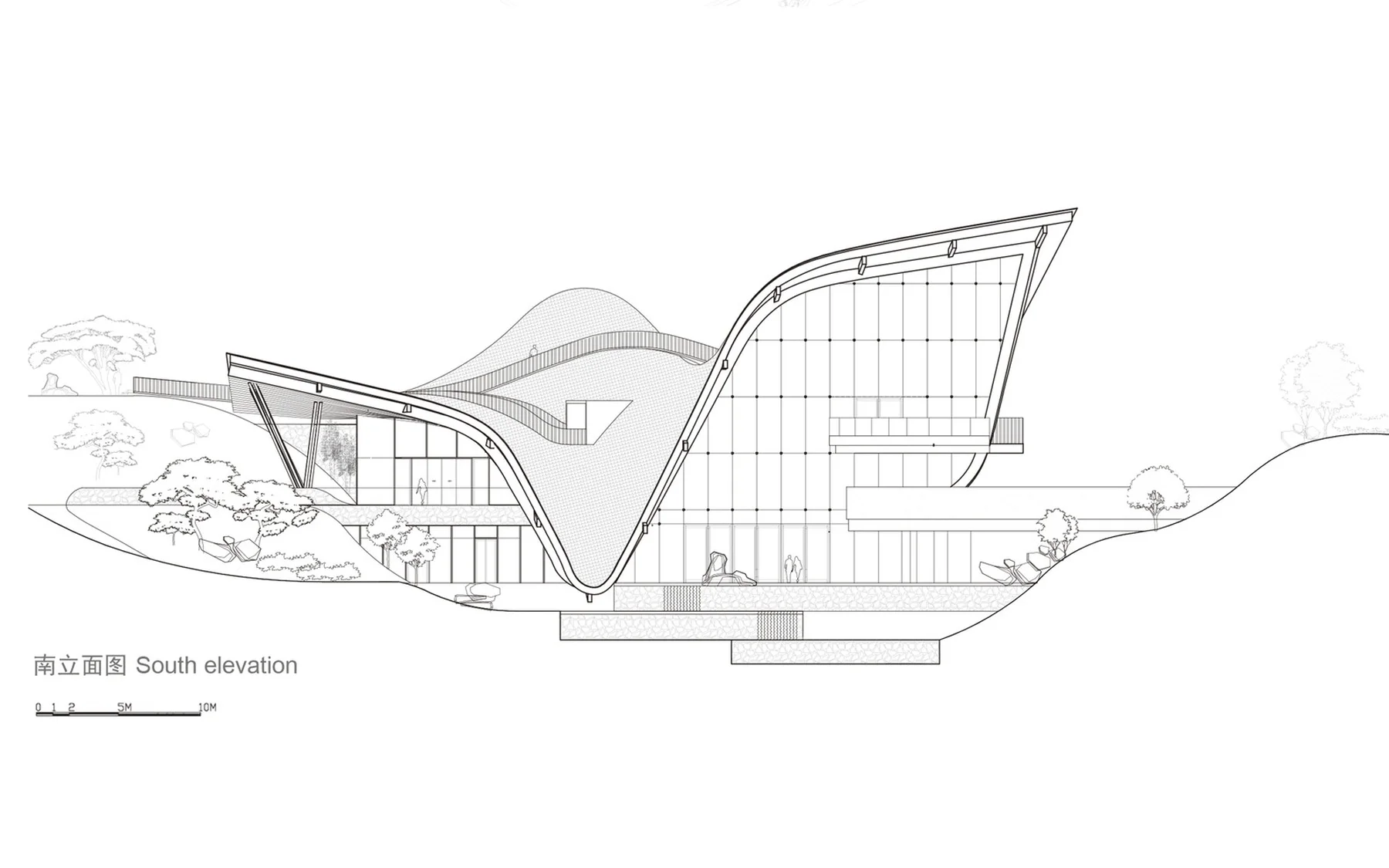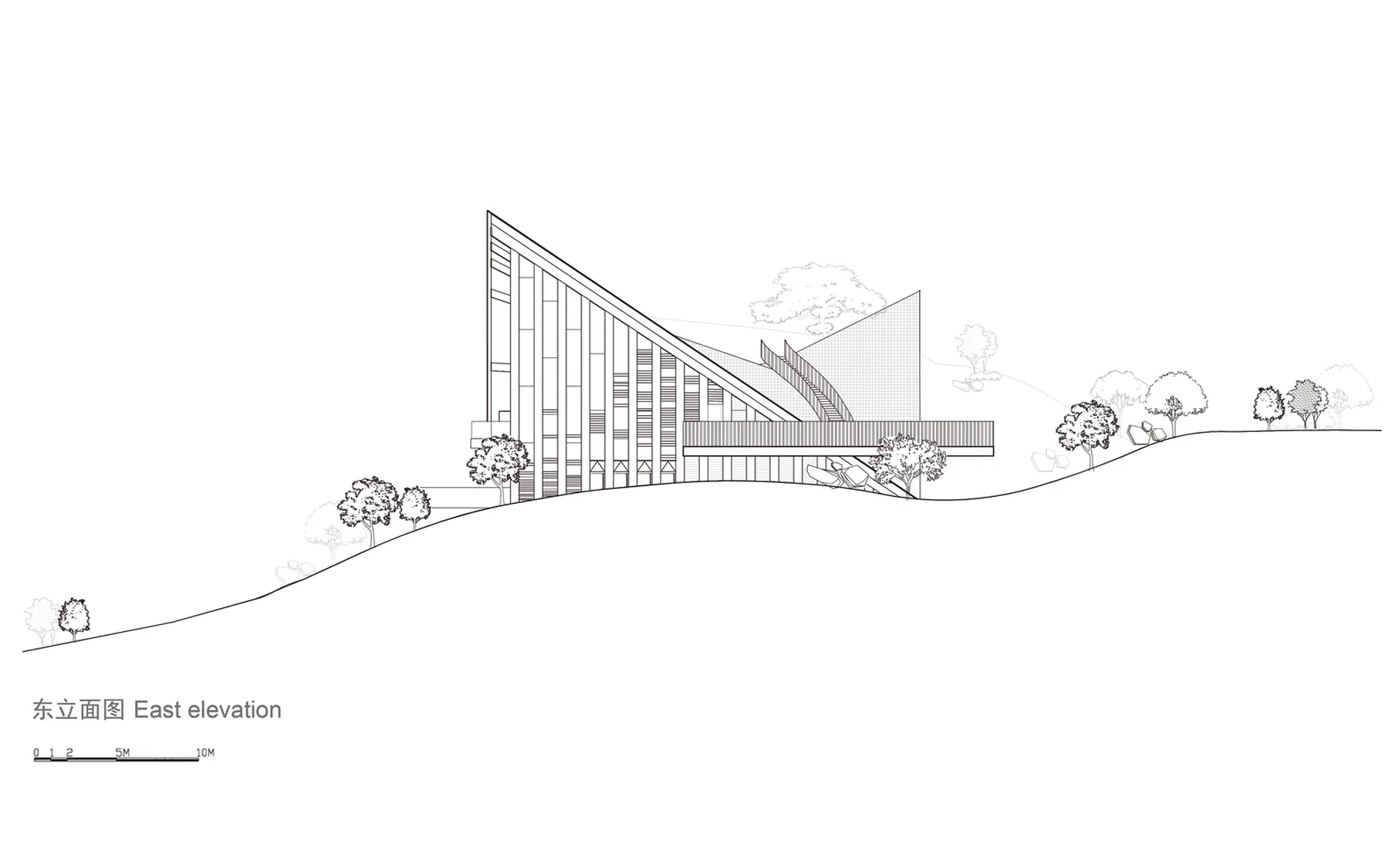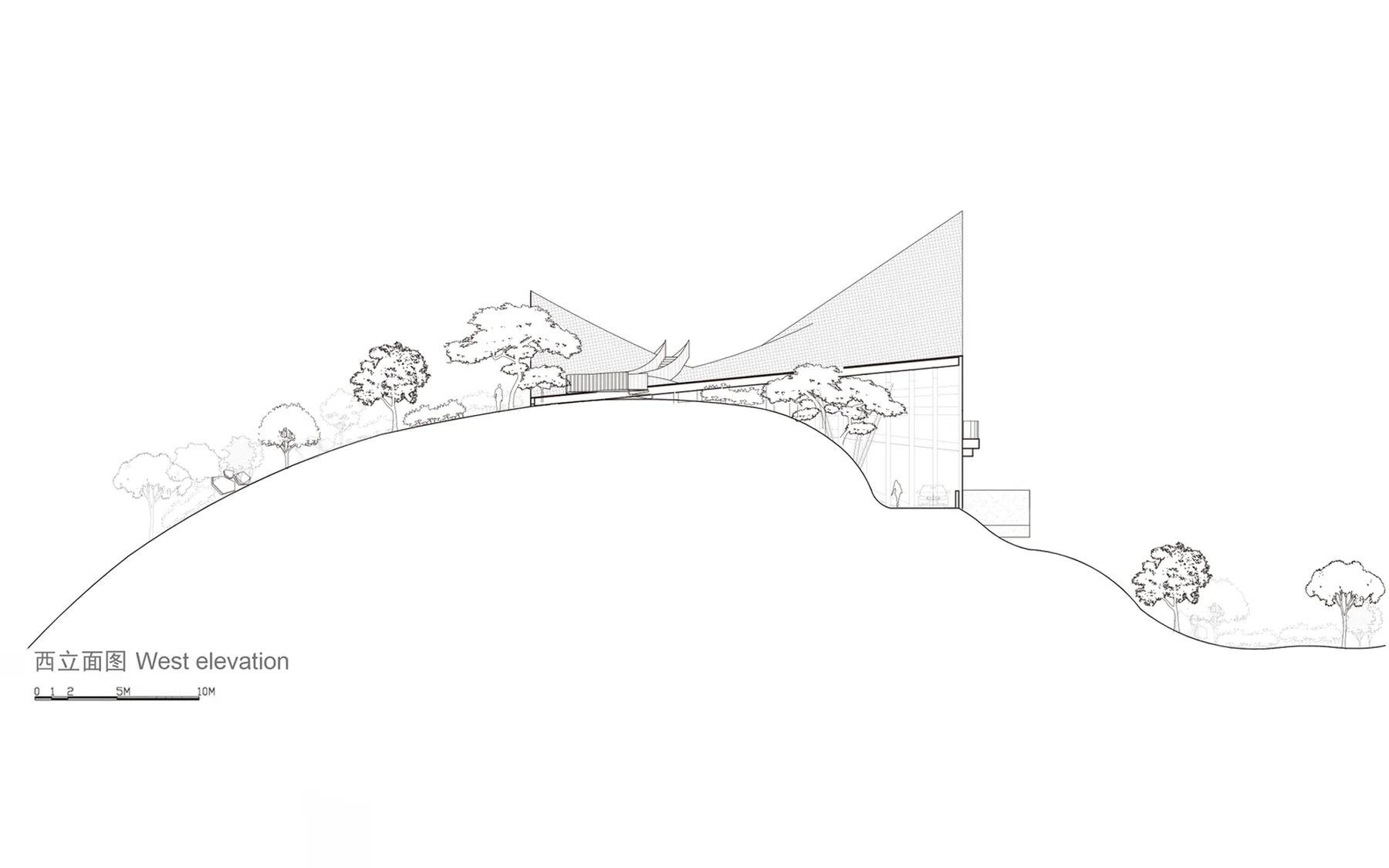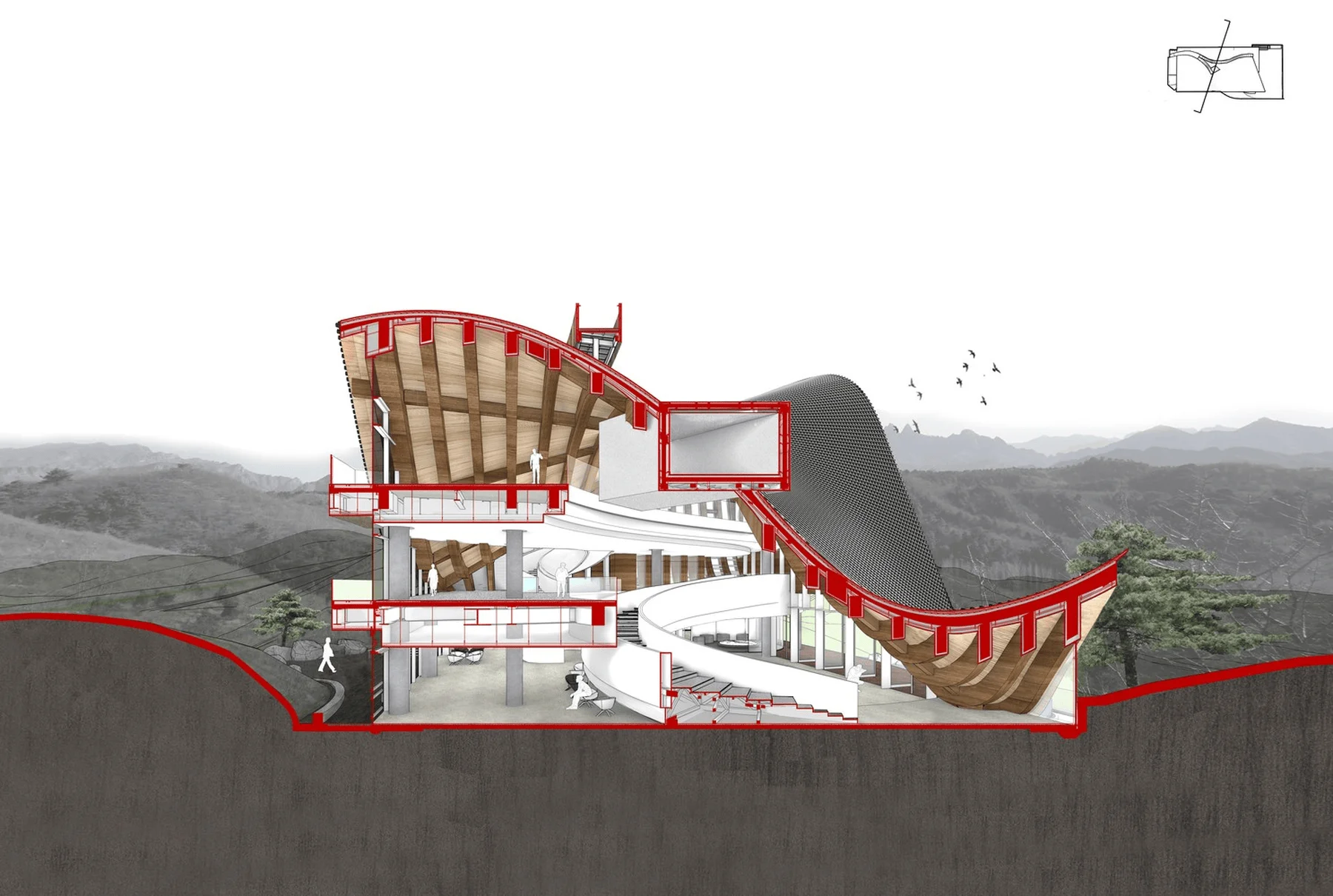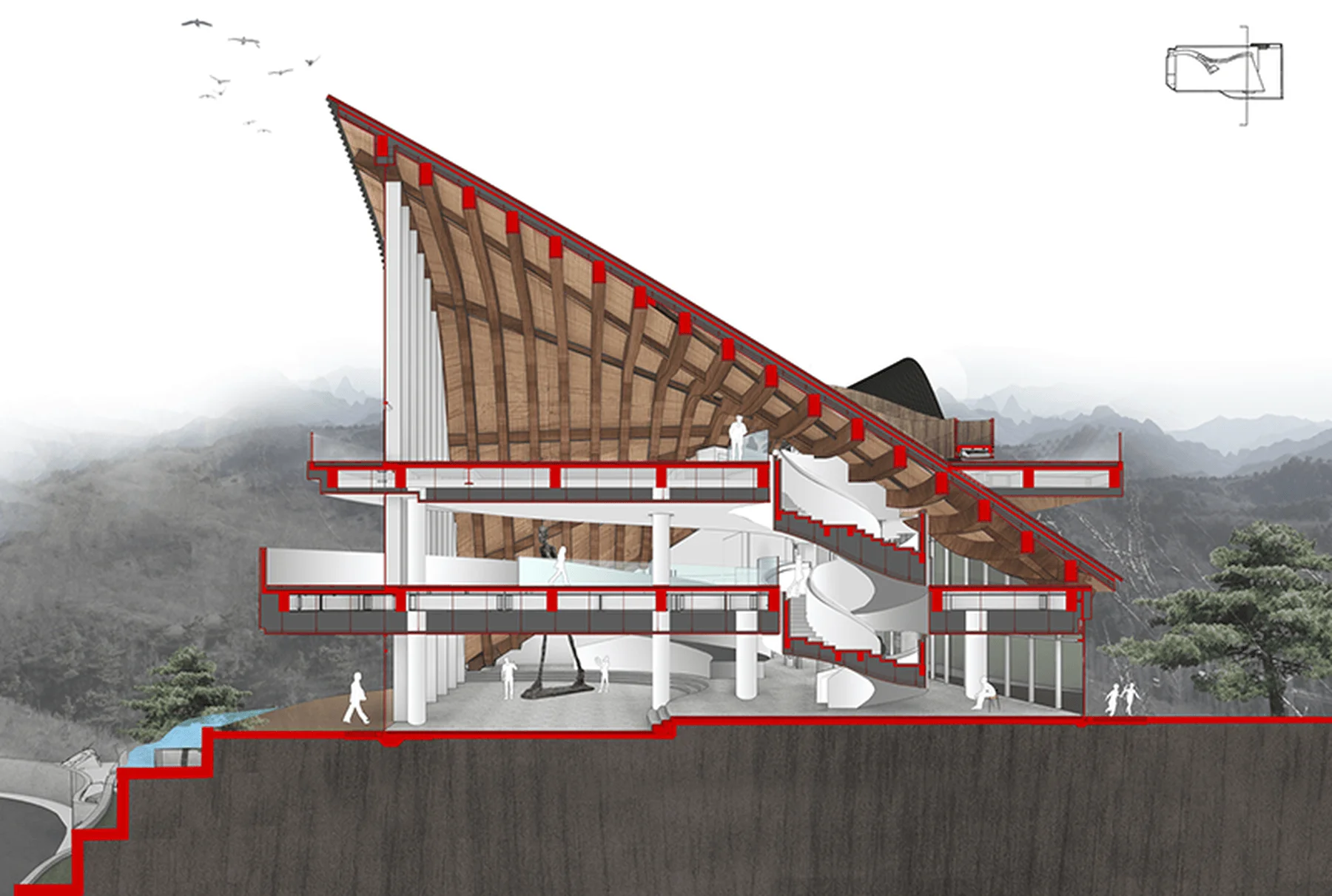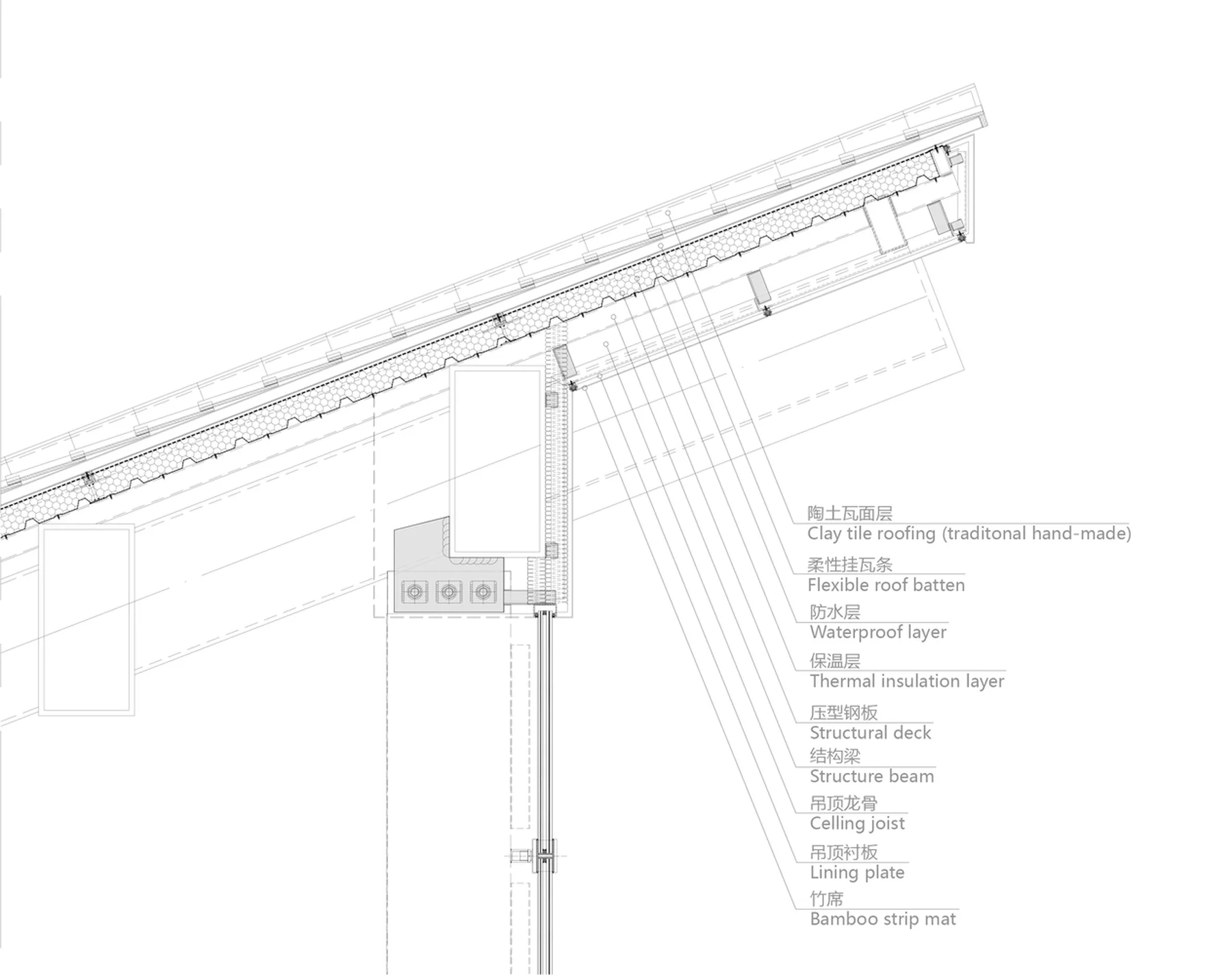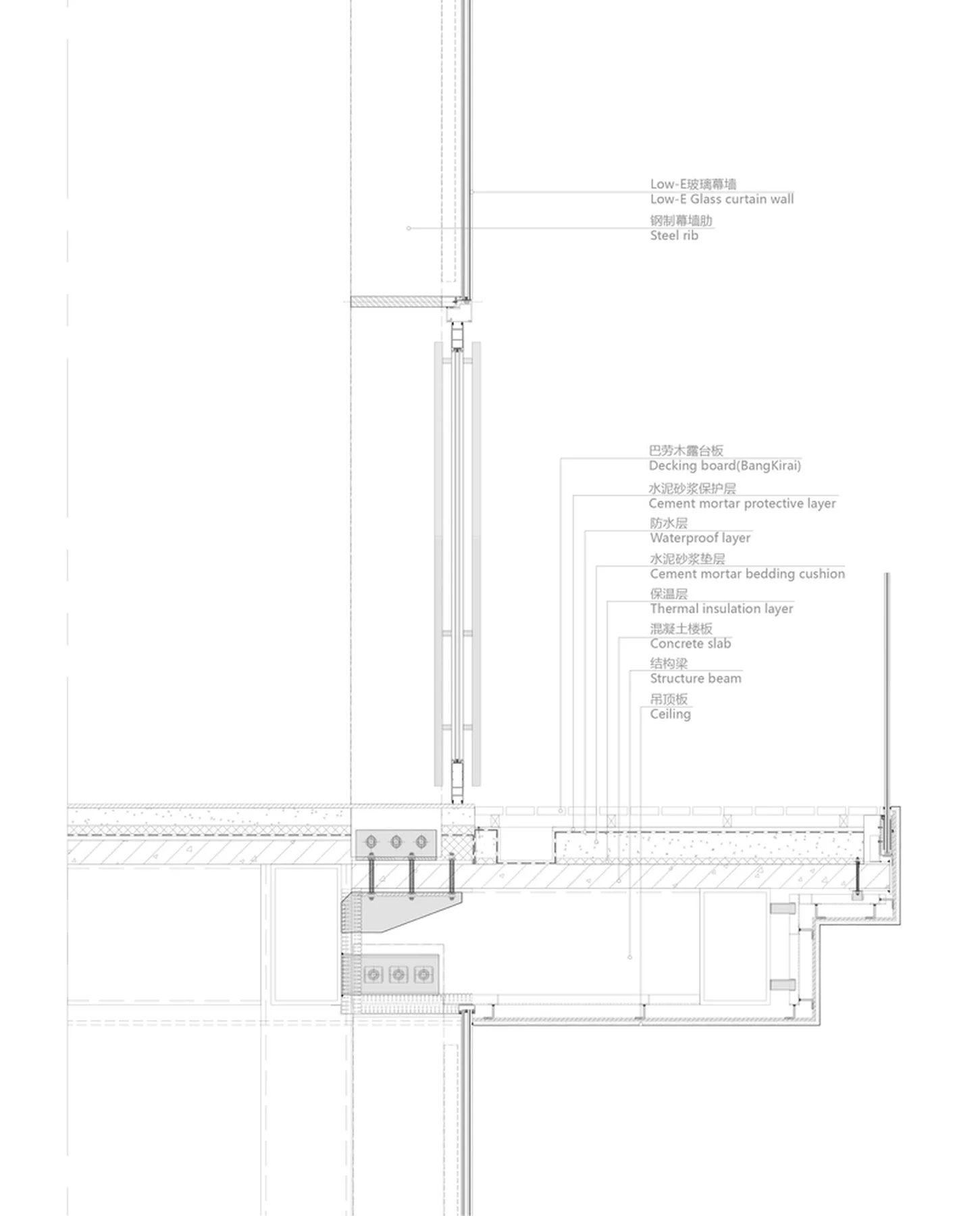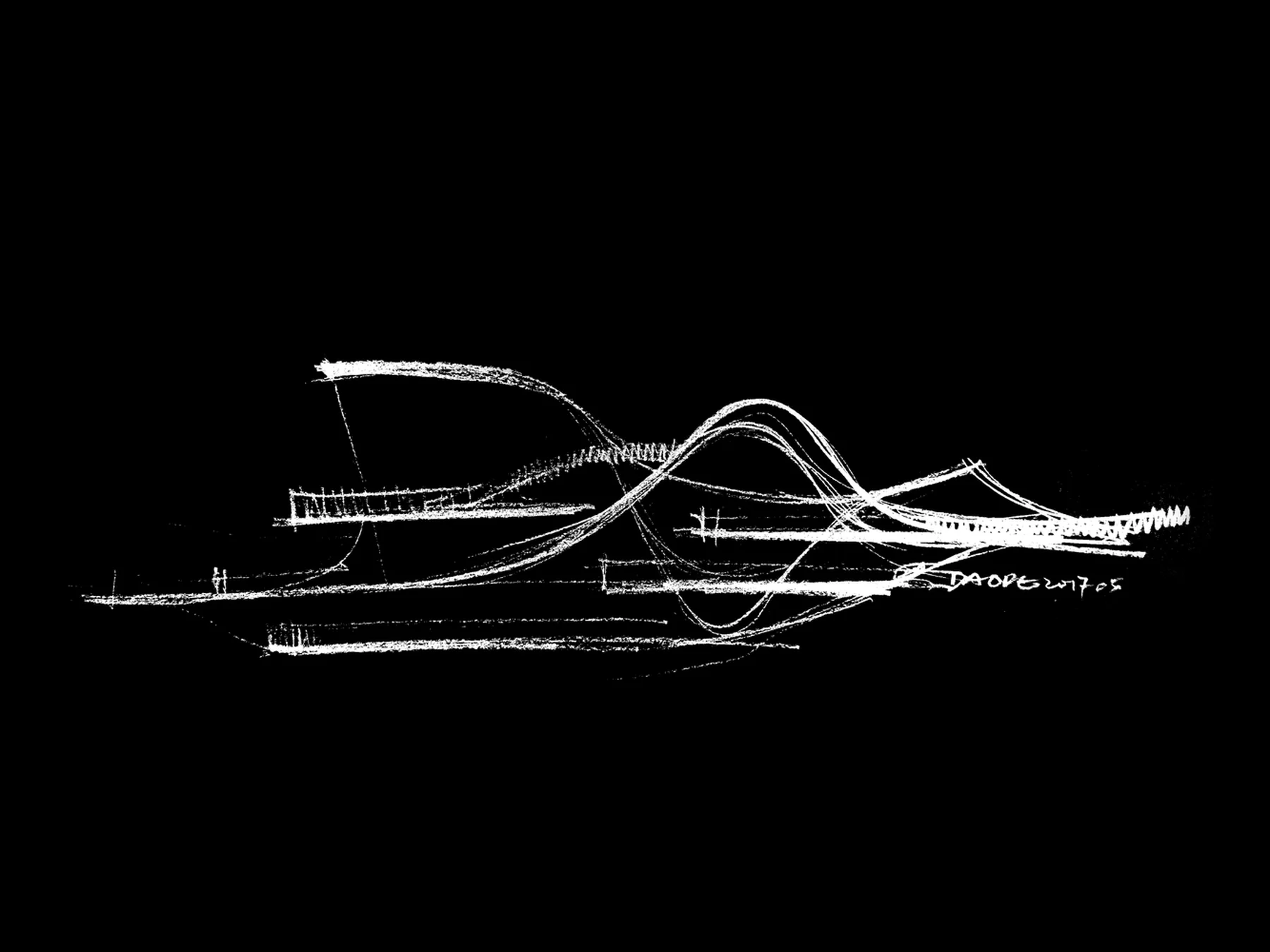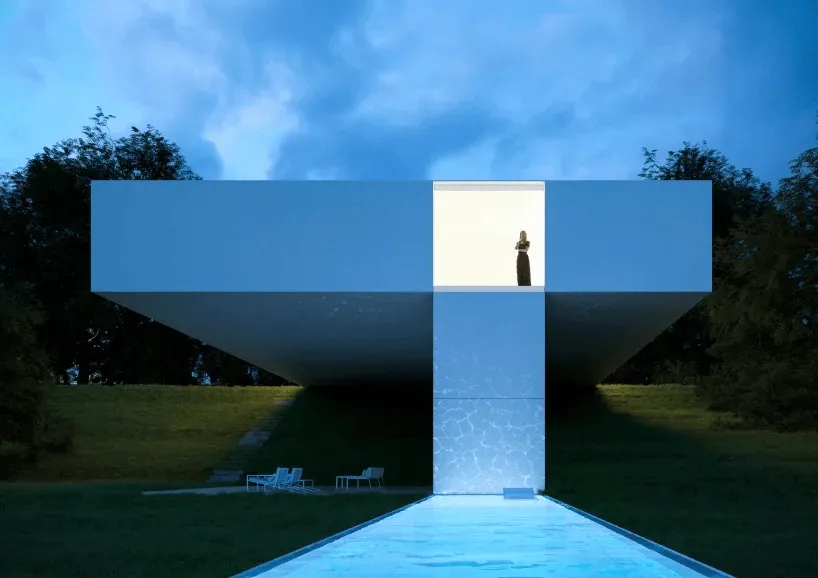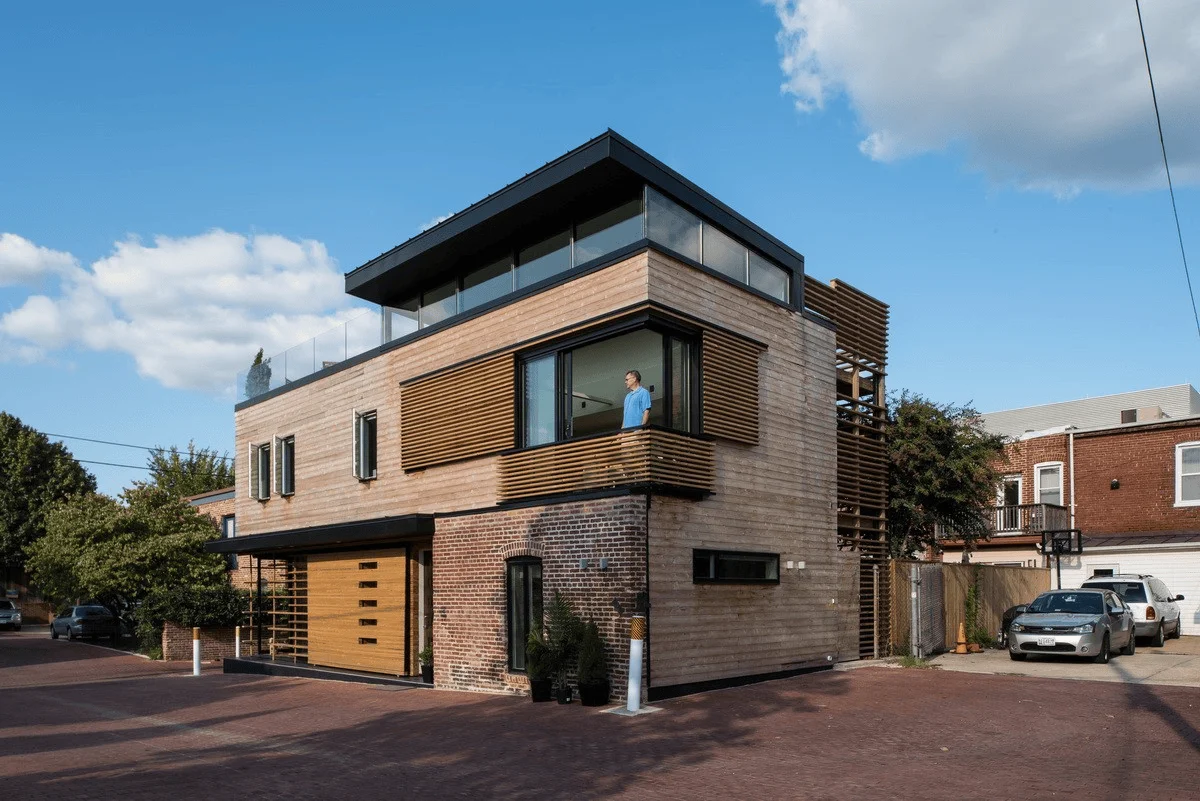The Phoenix Valley Mountaintop Art Museum is situated on the Yanshan Mountains at the border of Beijing and Chengde, China, with a commanding view of the Jinshanling Great Wall. The museum, covering 1,500 square meters and boasting 2,600 square meters of indoor space, serves as an art exhibition venue for cultural activities and also functions as a reception and display center for the overall development project of Phoenix Valley. The museum’s form embodies our contemplation and extension of the Chinese classical spirit, with a focus on the concept of “势” (shi), an ancient Chinese understanding of objective phenomena that encompasses their evolution in time and space. The building’s form inherits and interprets “势”, seamlessly blending into the surrounding mountains and natural landscape, mirroring the contiguous mountain ranges and natural formations. Visitors enter the museum through a slightly elevated entrance, leading to an open exhibition area on the first floor, offering panoramic views of the distant mountains and nearby pines, ensuring a constant connection with nature. The descending curve of the roof draws attention to the towering space on the lower level, where a circular grand staircase connects the two main art exhibition platforms, creating a three-story, high-ceiling space for showcasing large-scale artworks. The eastern side of the lower level, embedded in the mountain, houses the multimedia interactive space and the audio-visual room, areas that do not require natural light. On the north side of the lower level, overlooking the nearby pine forest and distant mountains, lies the museum’s café, with an outdoor platform for panoramic views. In addition to the elevator, a spiral staircase, traversing the entire building, provides direct access to the top floor, which serves as a VIP reception area, encompassing a tea room, lounge, and dining spaces, with varying room sizes based on functional needs. The southern section, facing the Great Wall, houses the banquet area, featuring a higher ceiling and expansive glass walls, and an open cooking station facilitating interaction with guests. On the west side, a concrete box acts as a connecting entrance between the interior and exterior spaces, providing access to the mountaintop via a rooftop walkway or over the roof to the outdoor platform on the east side, seamlessly connecting the entire top floor, indoors and out. This walkway, seamlessly integrated with the roof’s undulation, blurs the boundaries between nature and man-made, symbolically echoing the sinuous mountain terrain and narrow space of the Jinshanling Great Wall, standing in the distance. It serves as a crucial spatial element, connecting the internal and external, modern and future. The roof design is not merely aesthetic but the result of comprehensive rainwater analysis simulations, wind tunnel tests, and meticulous refinement through mechanical digital models and physical models. Digital technology is also integrated into every stage of construction: for example, the 17 complex curved steel beams of the main structure are precisely manufactured and assembled, preserving the roof’s form, and enabling the fabrication and installation of numerous customized architectural components. Beyond the use of modern steel and glass, traditional materials, such as bamboo, wood, and traditional fired terracotta tiles, contribute to the overall atmosphere of the building, further connecting it to the Chinese classical spirit. Connected to the mountains and water, integrated with nature, perpetuating the Chinese classical spirit of “learning from nature”, and realized through modern construction techniques for contemporary use. The design and construction of the Mountaintop Art Museum is another significant exploration in our quest for a contemporary interpretation of digital architecture within the Chinese context.
Project Information:


